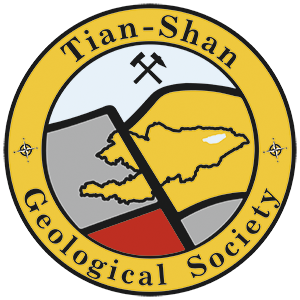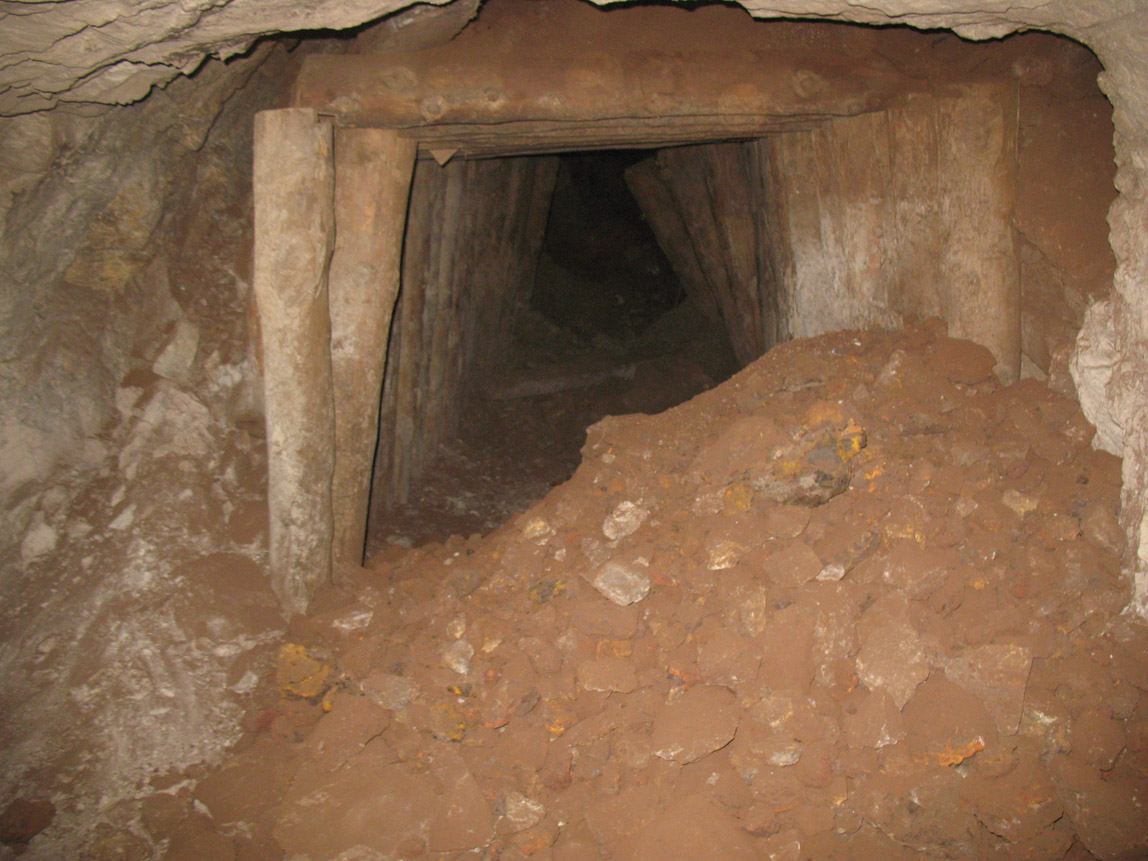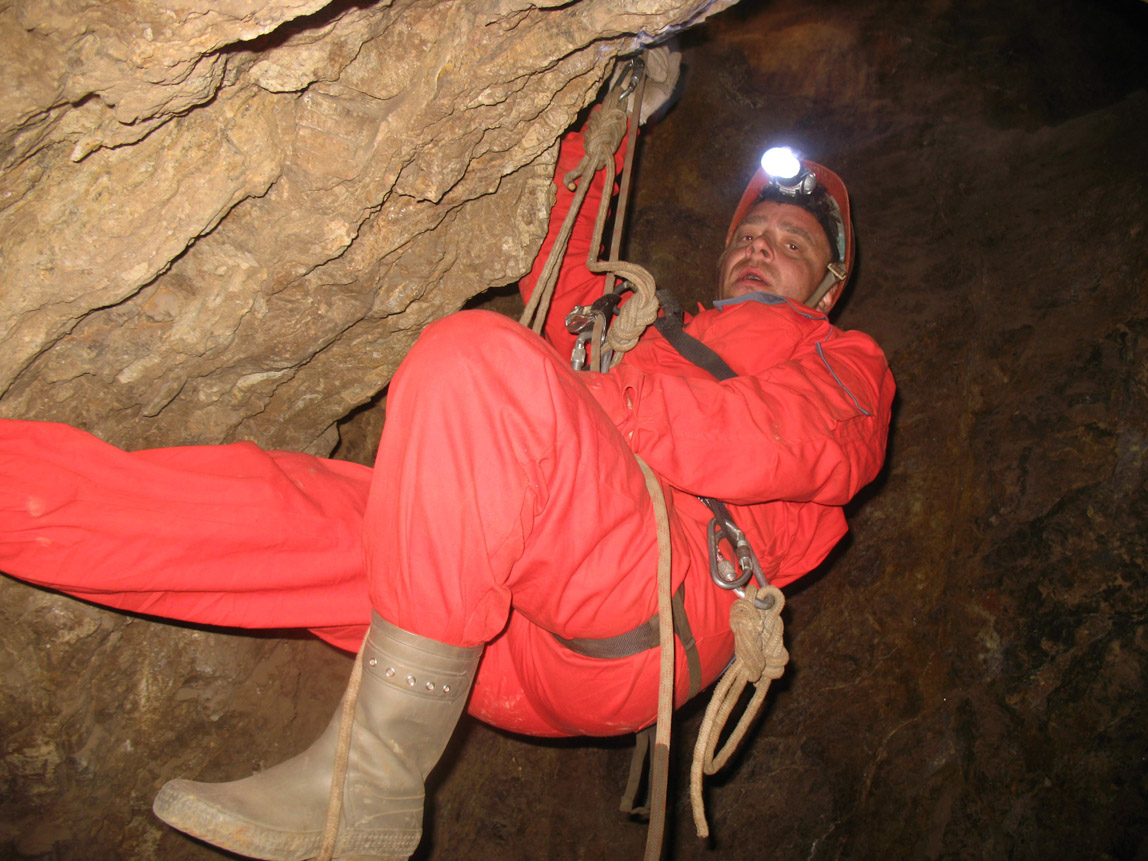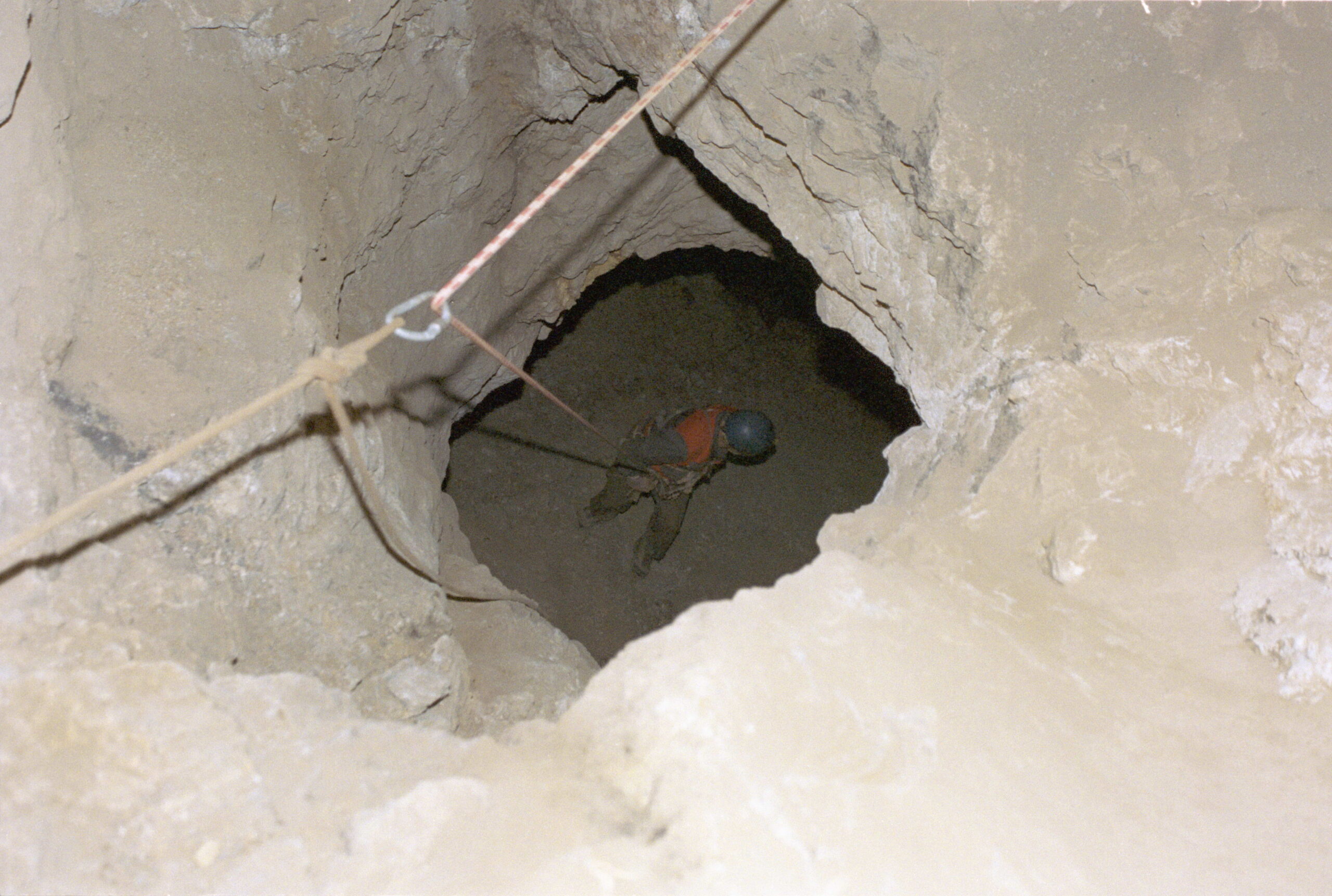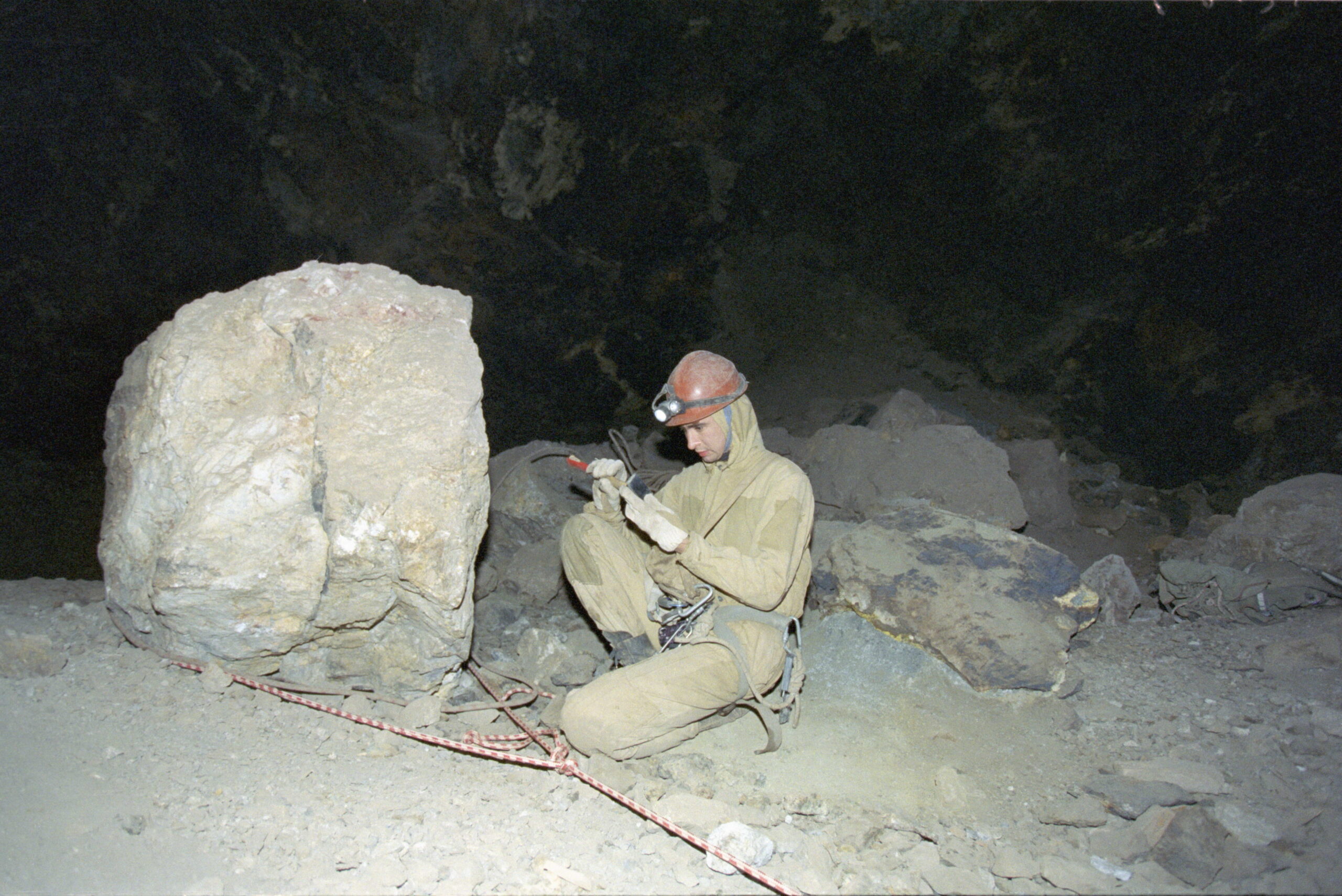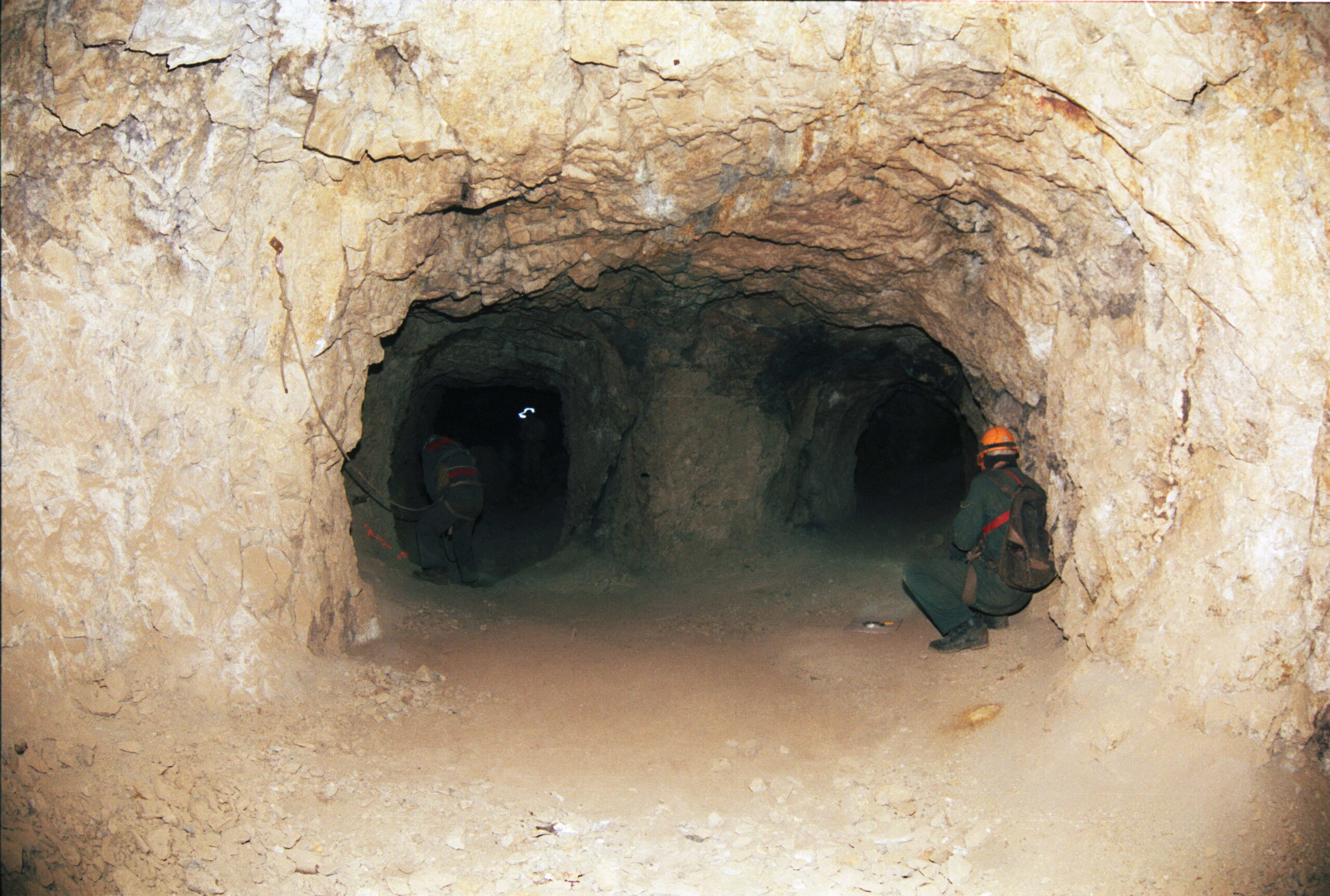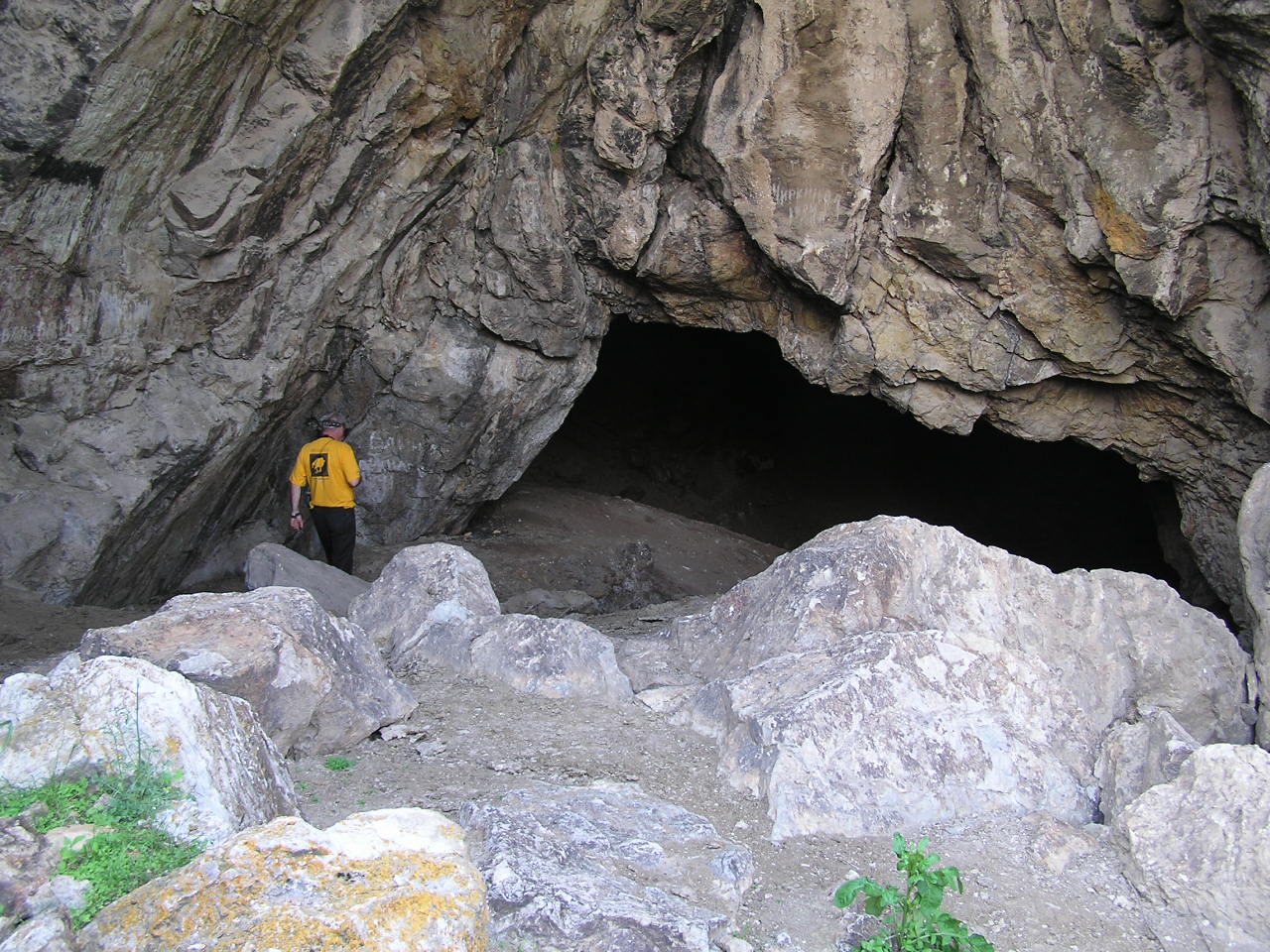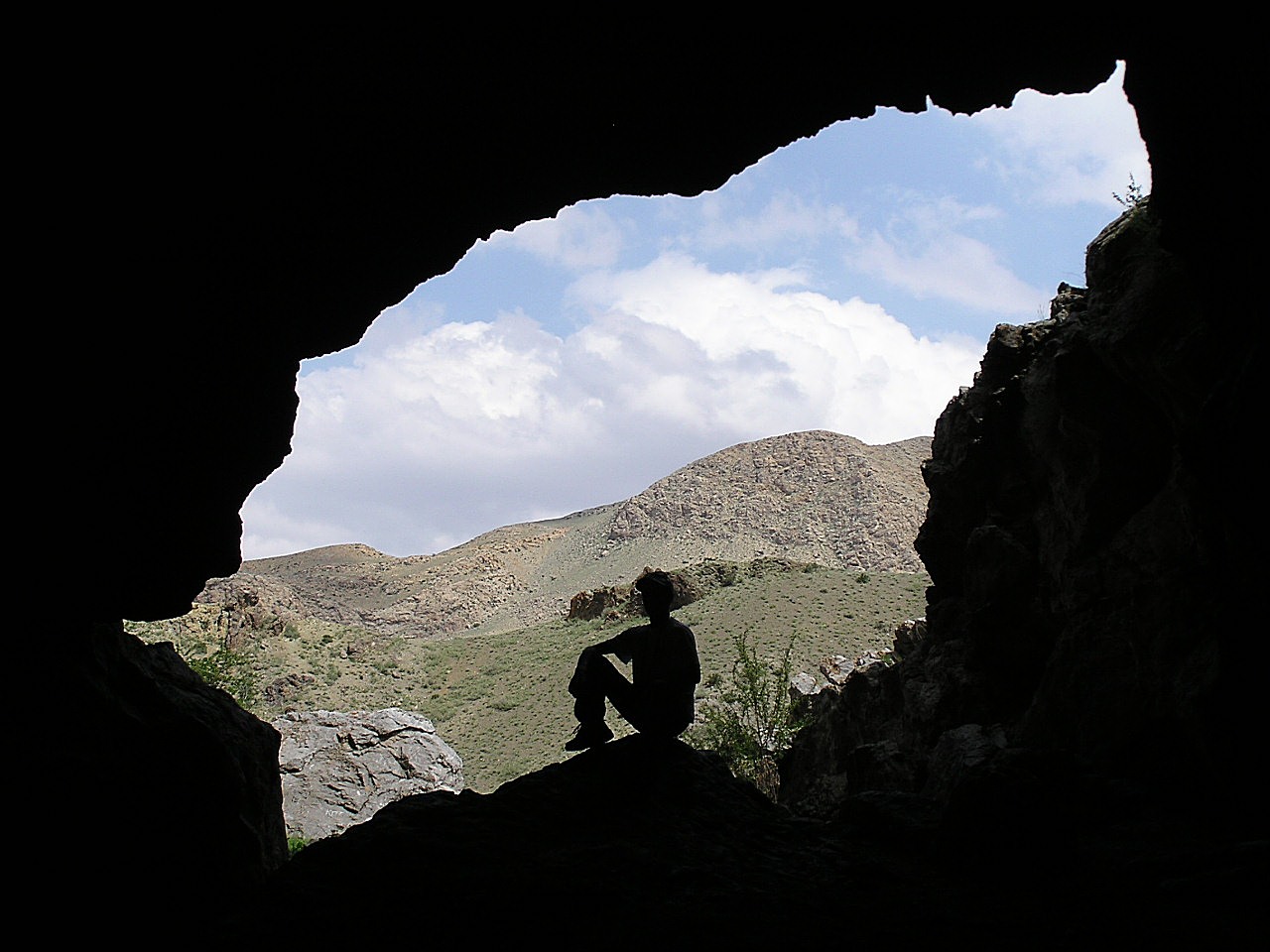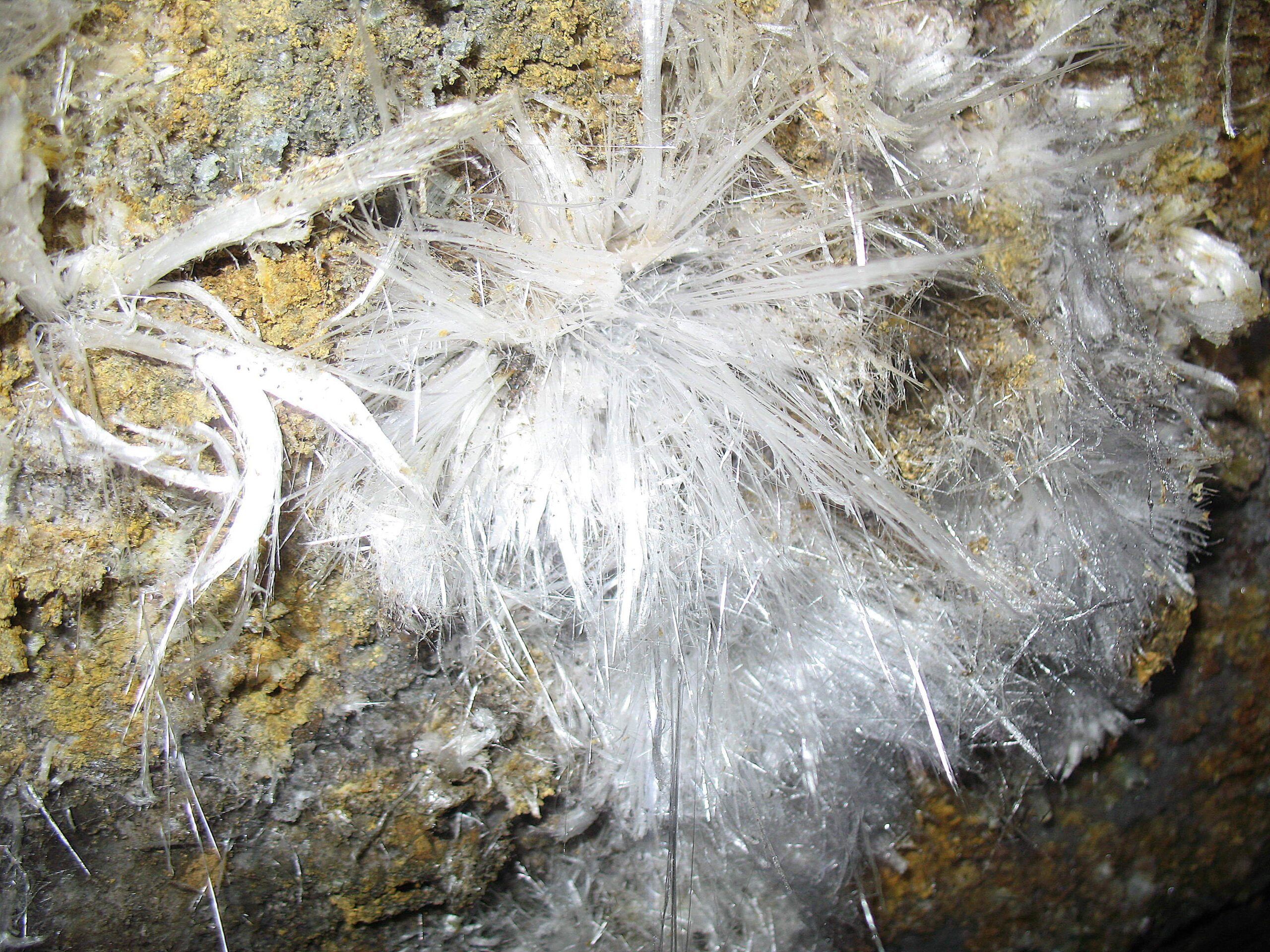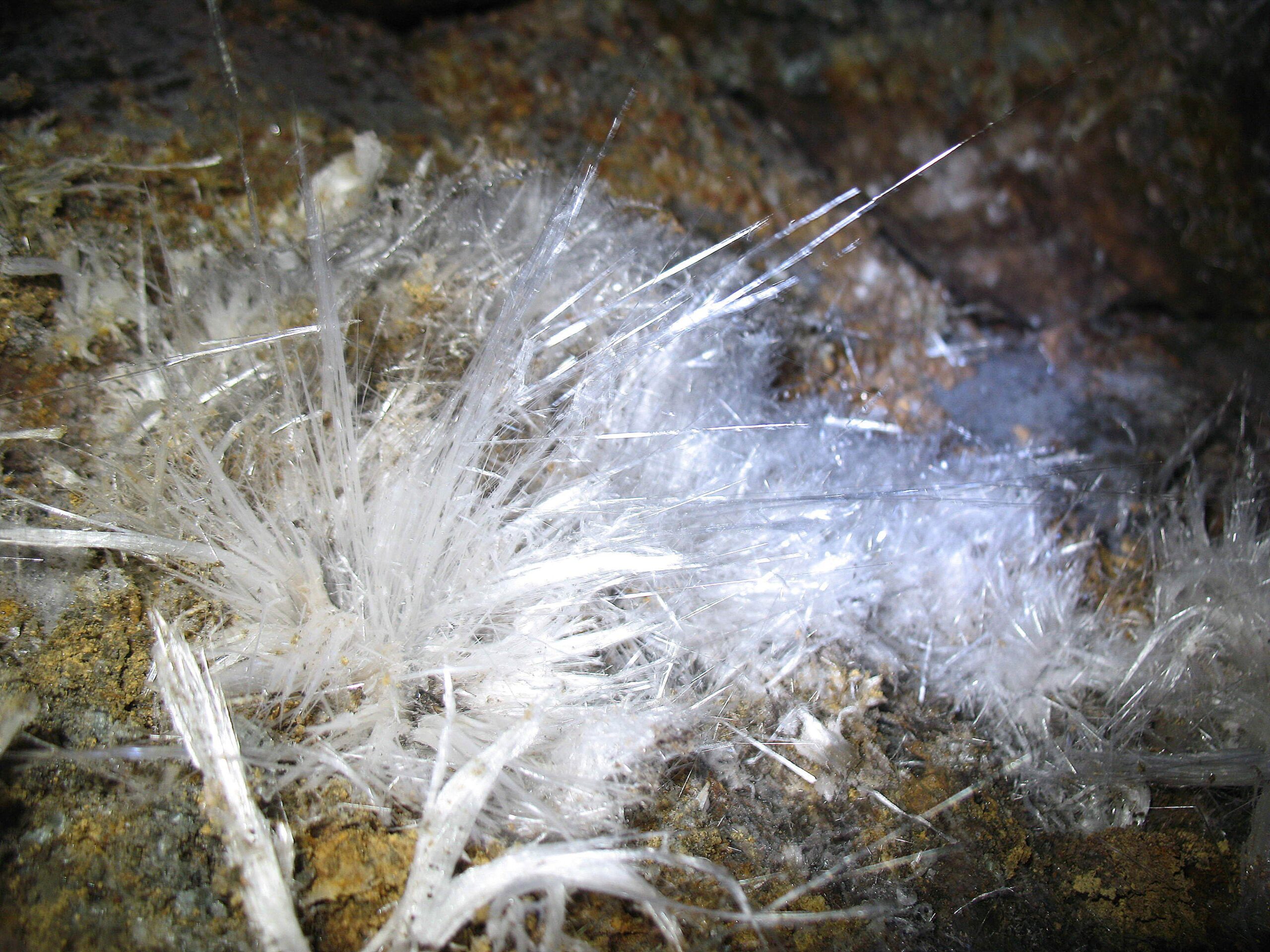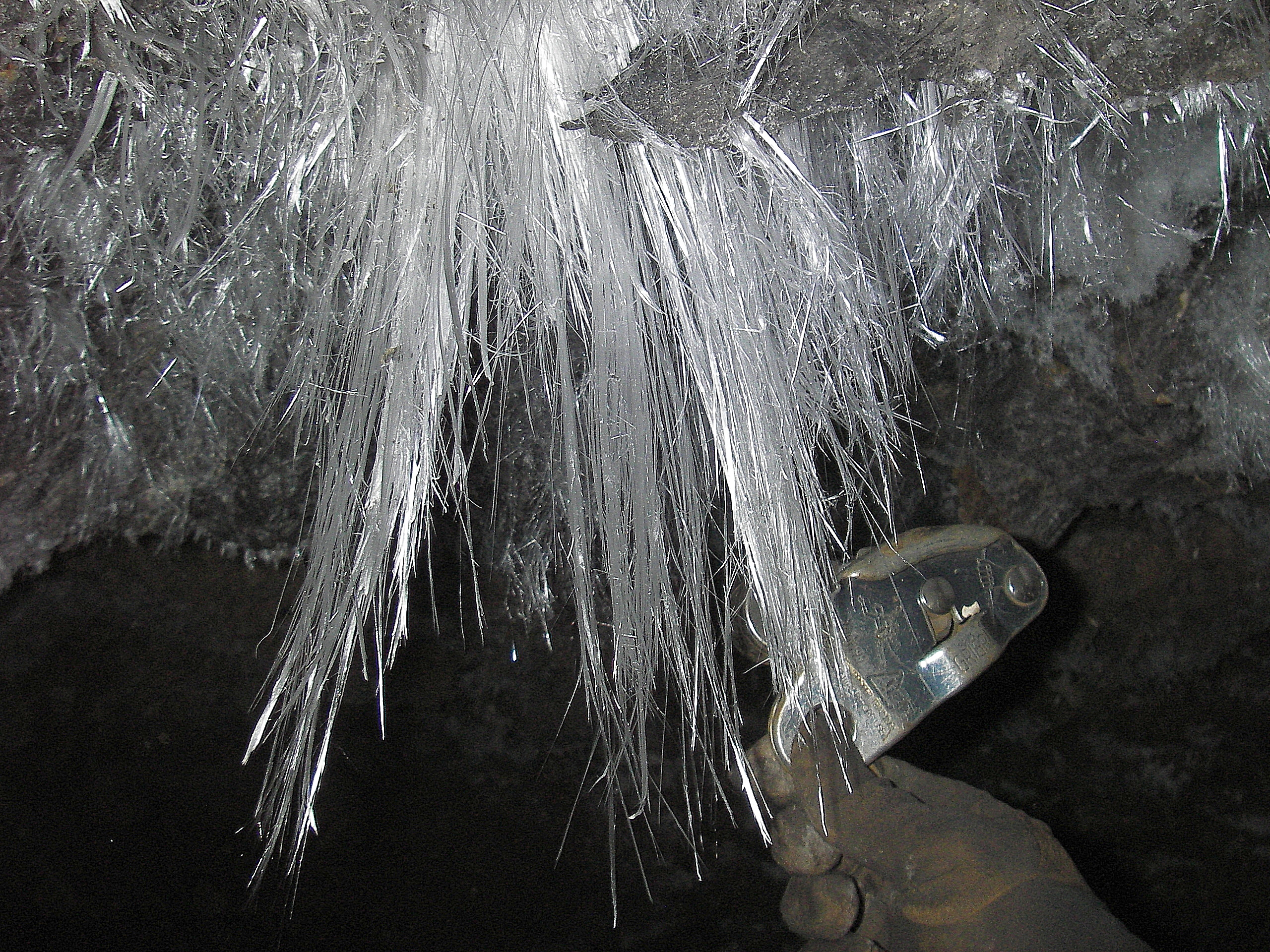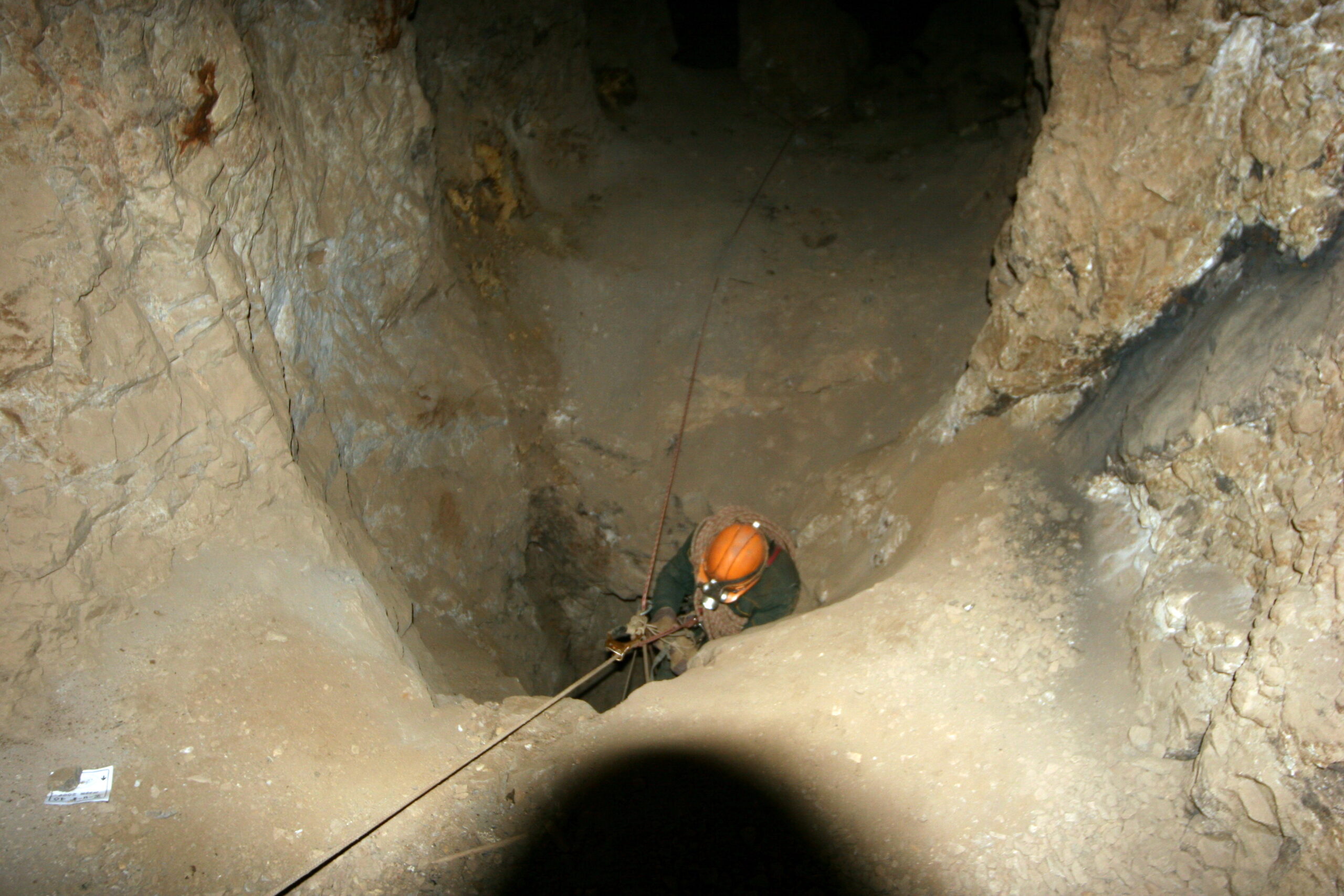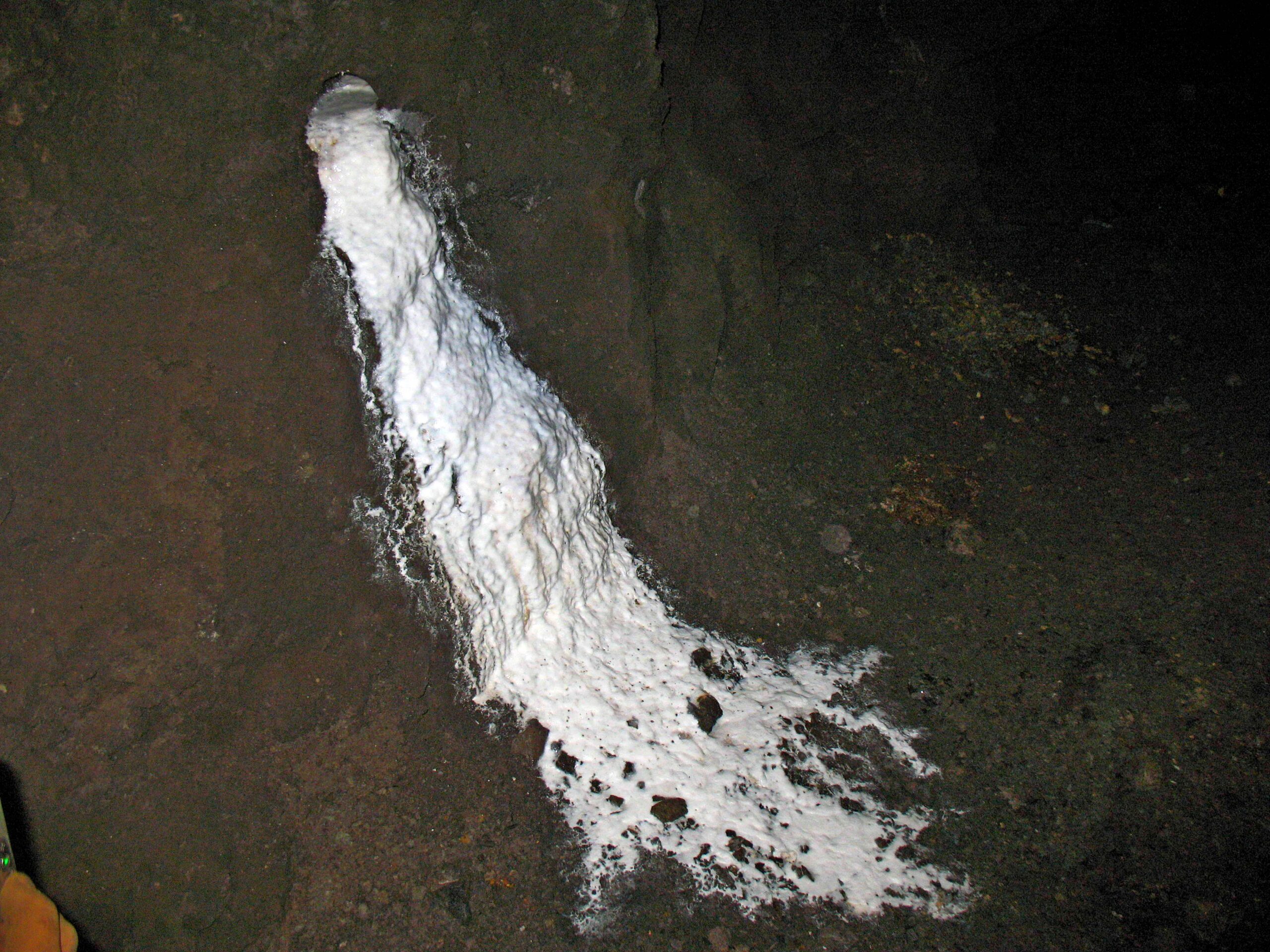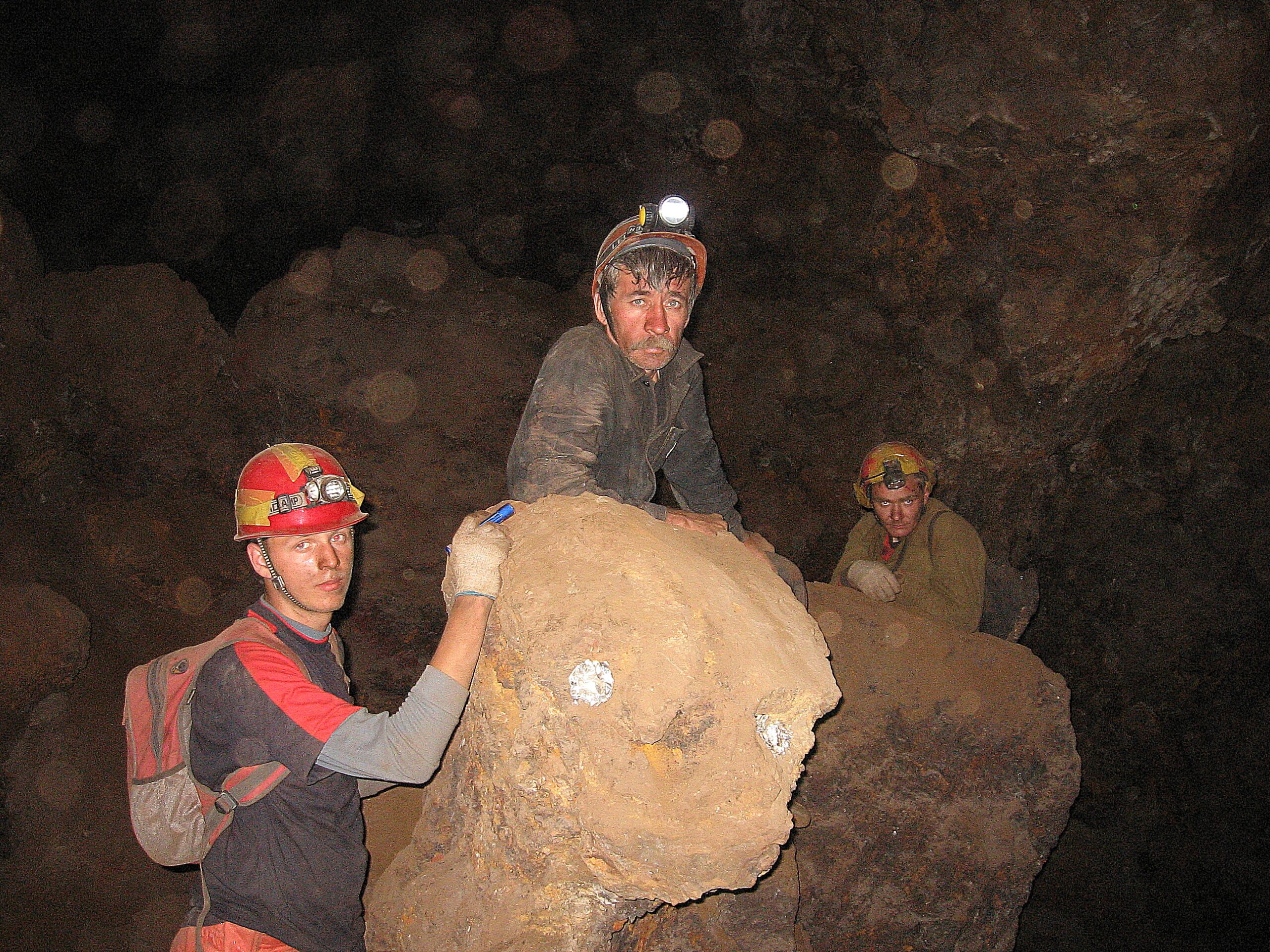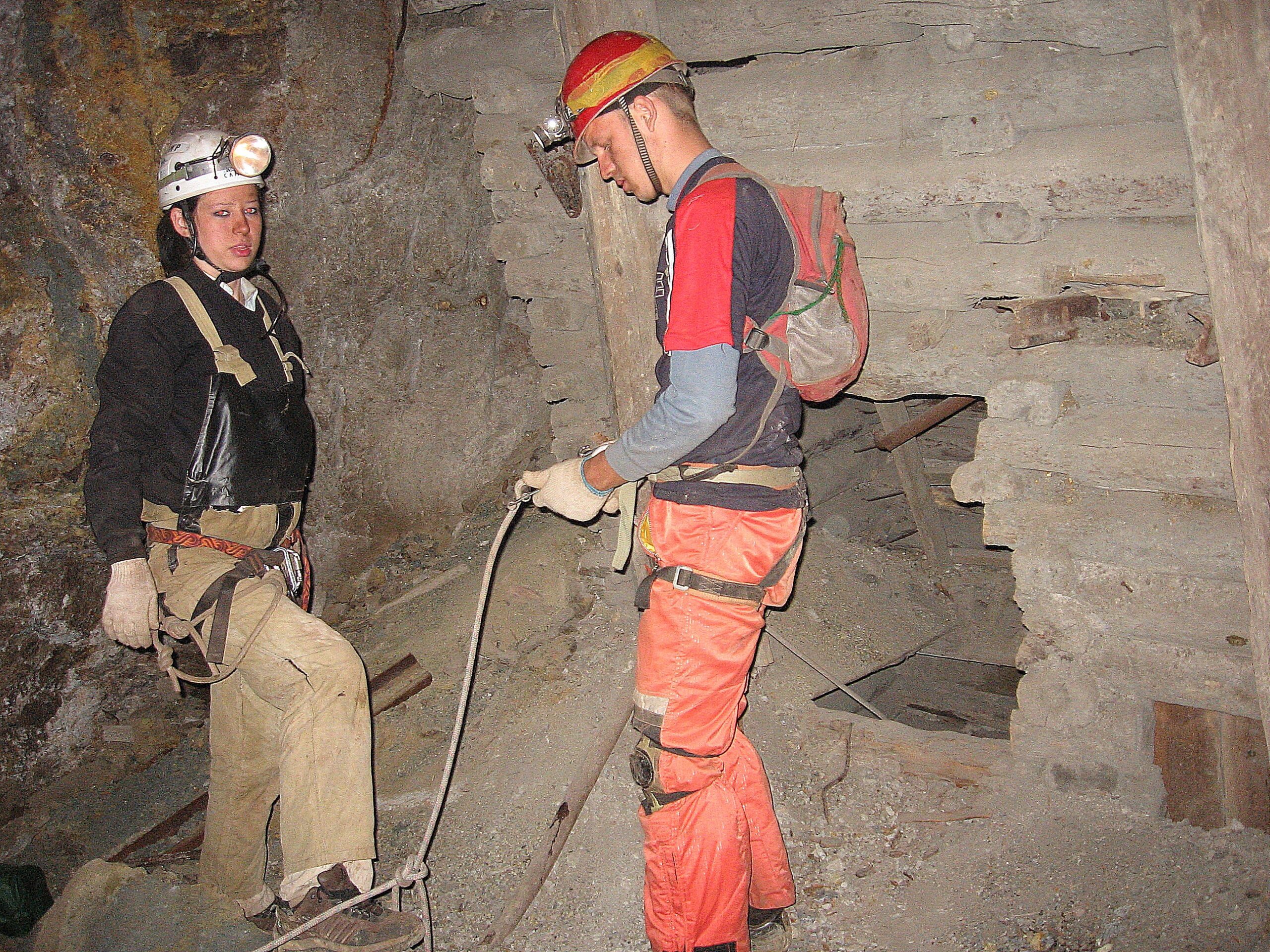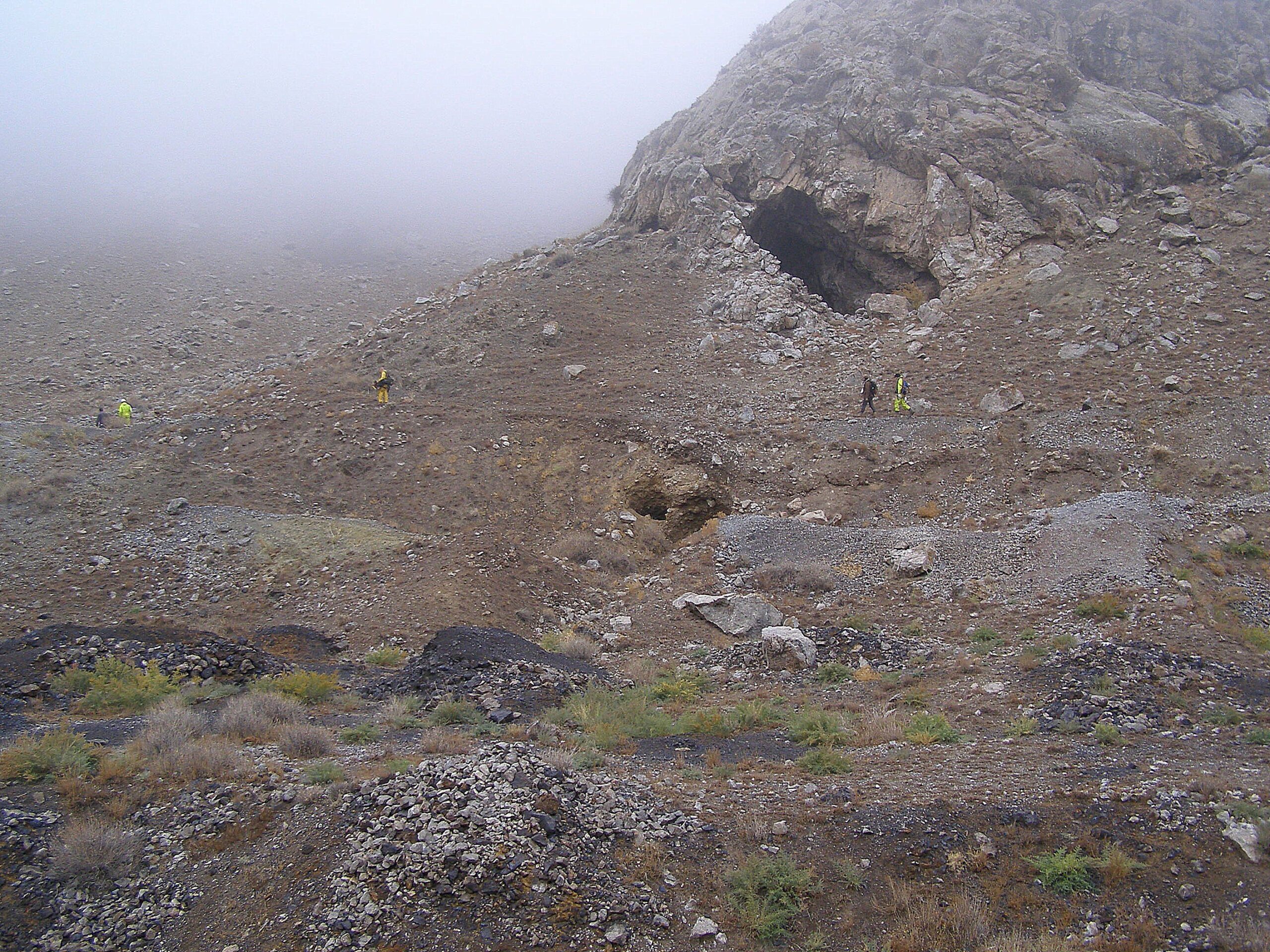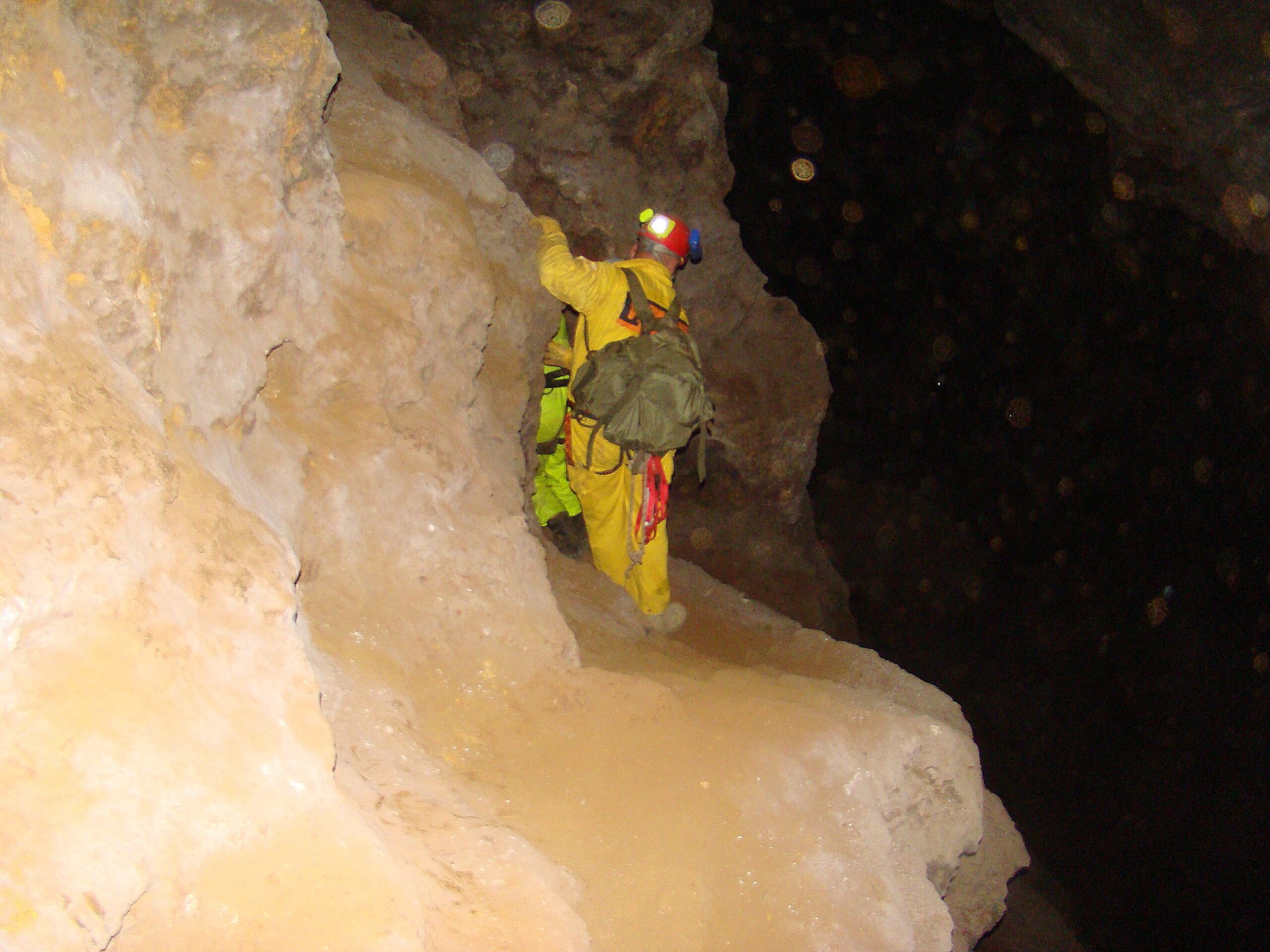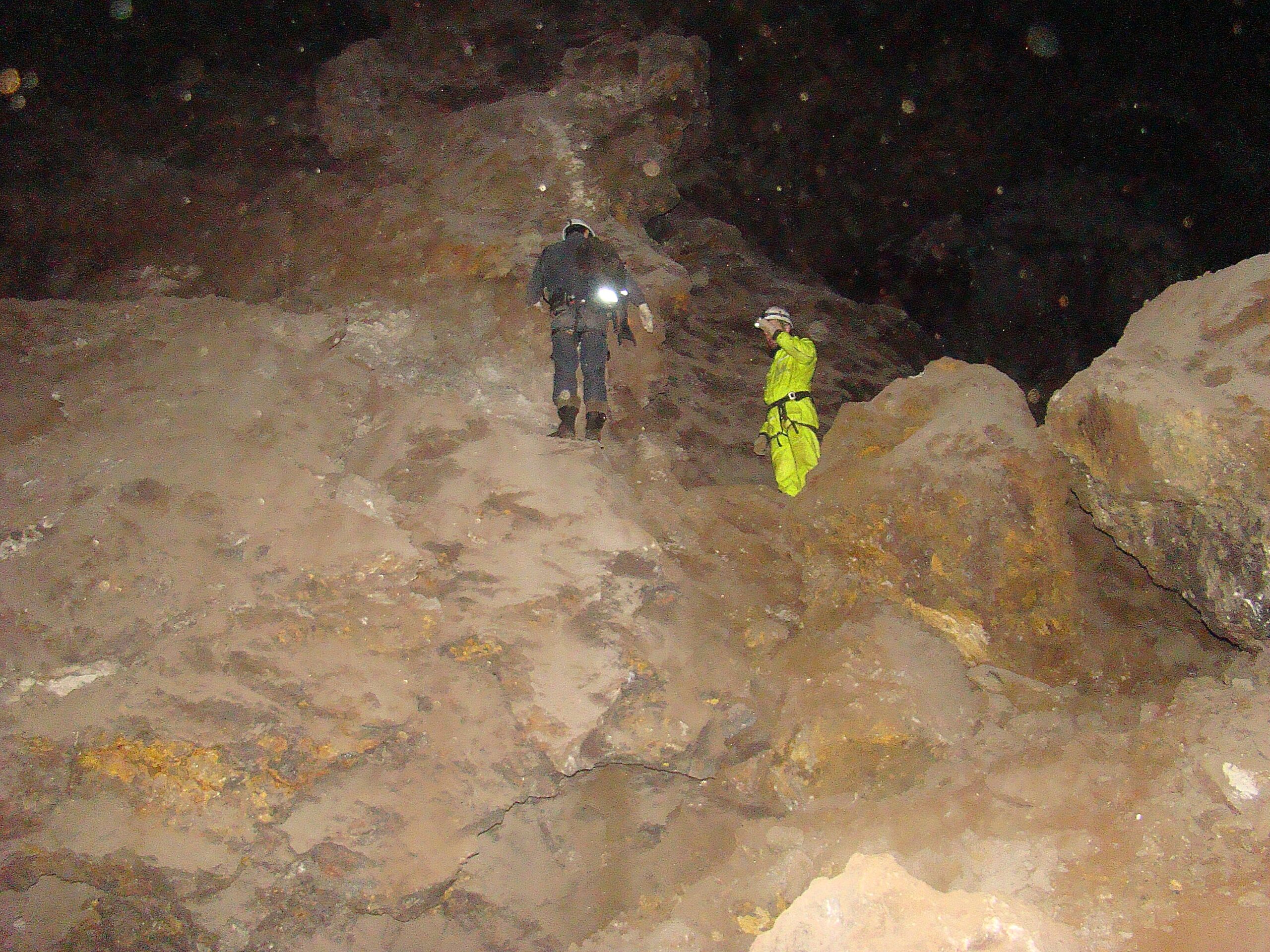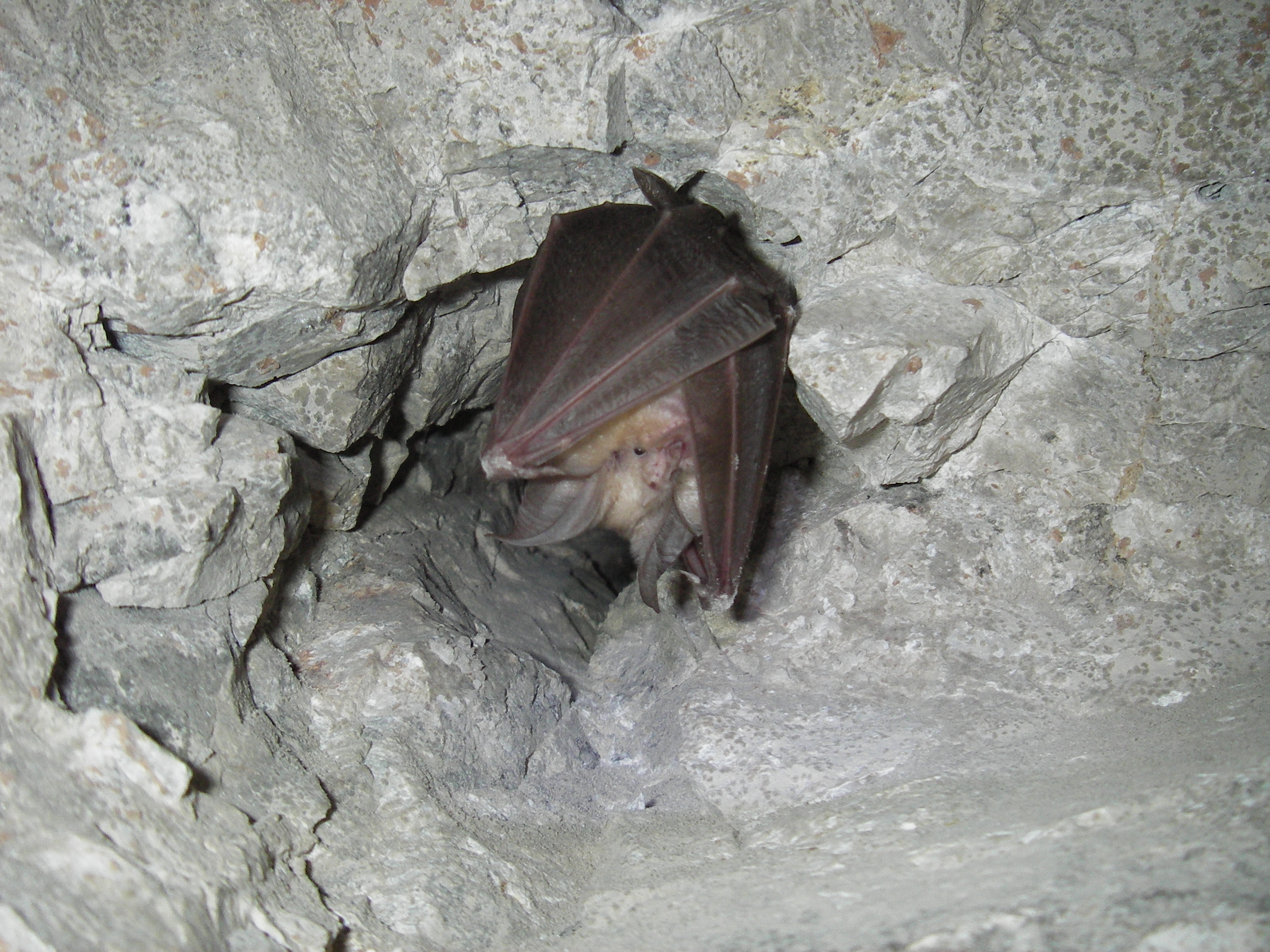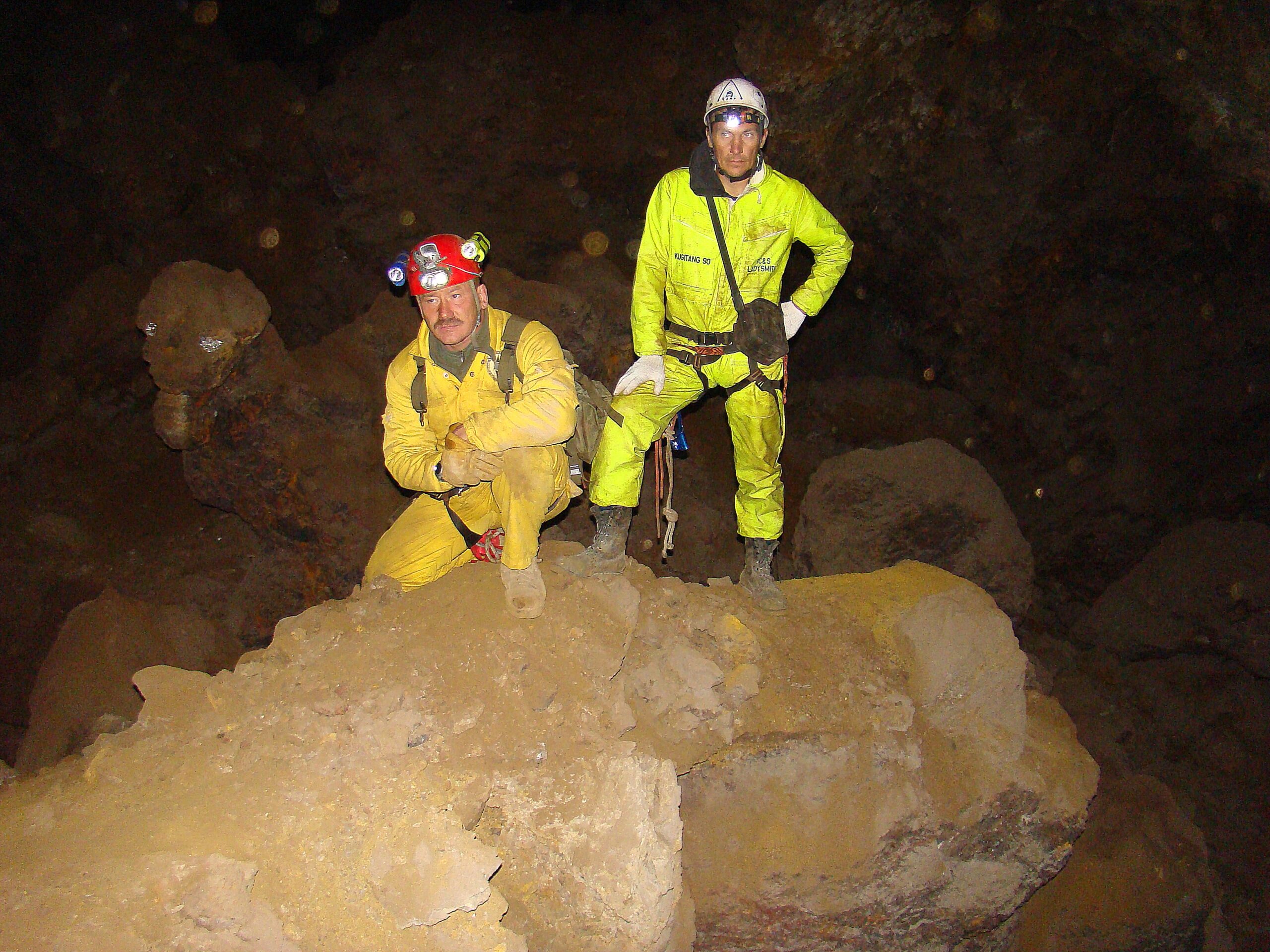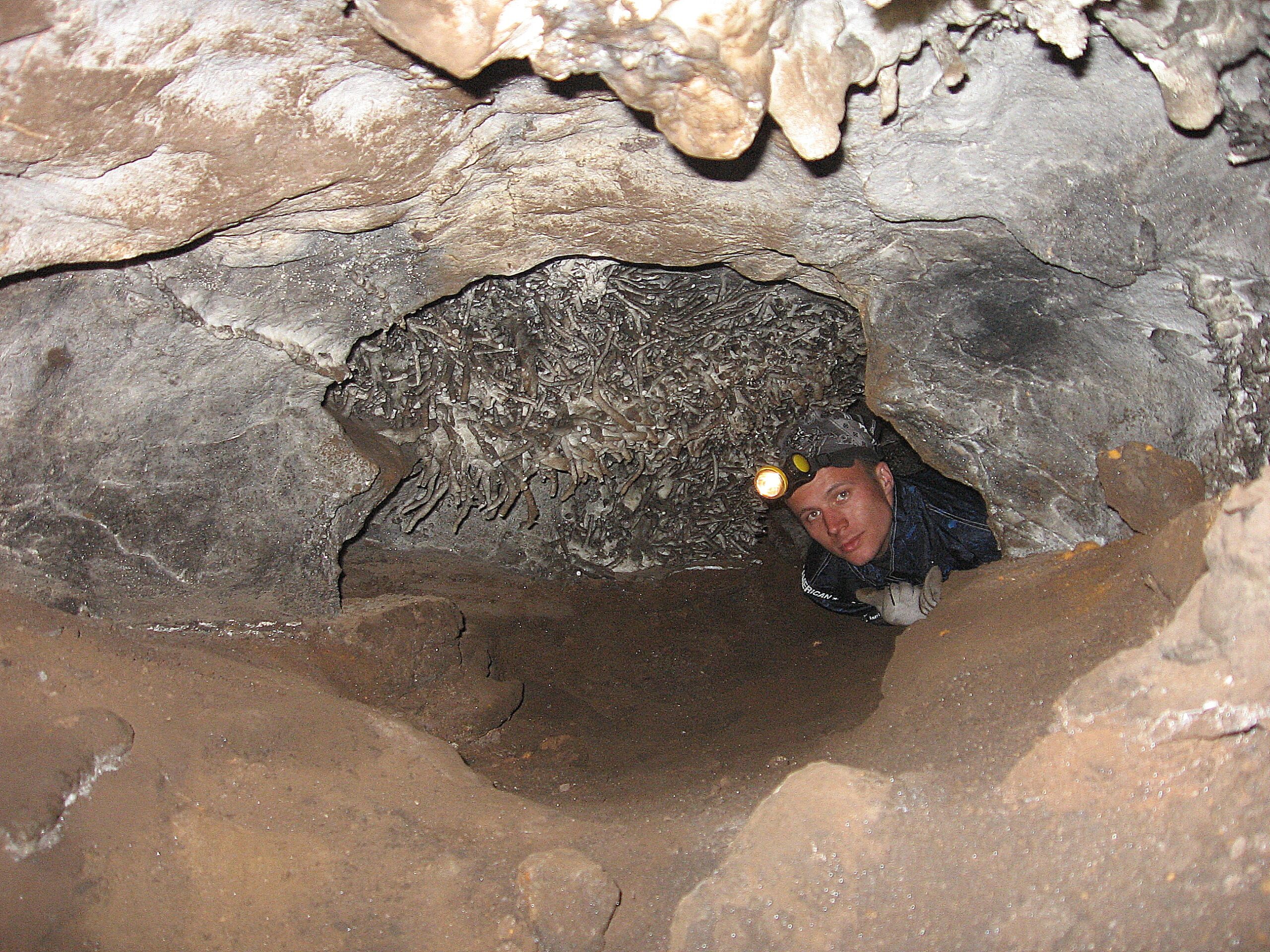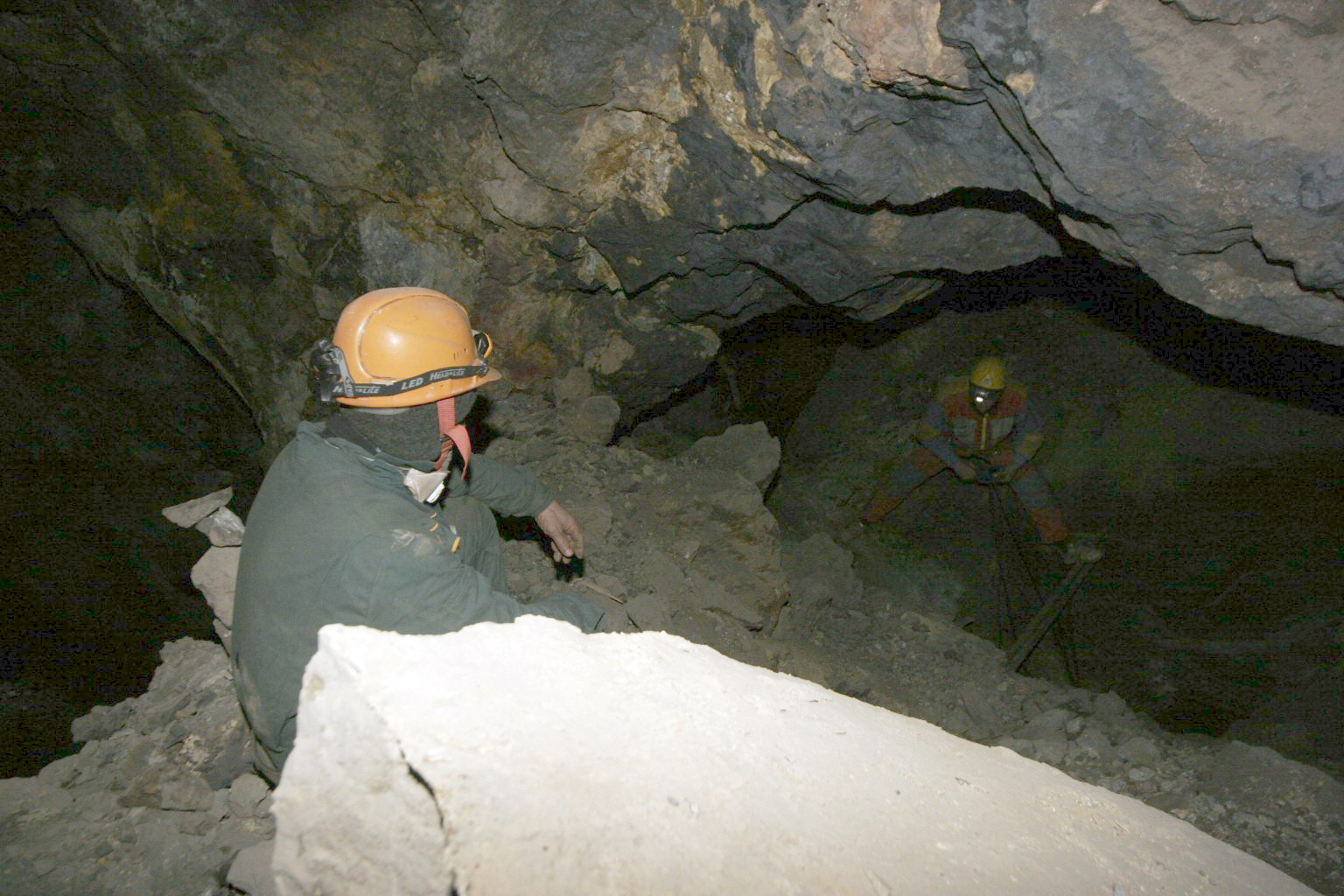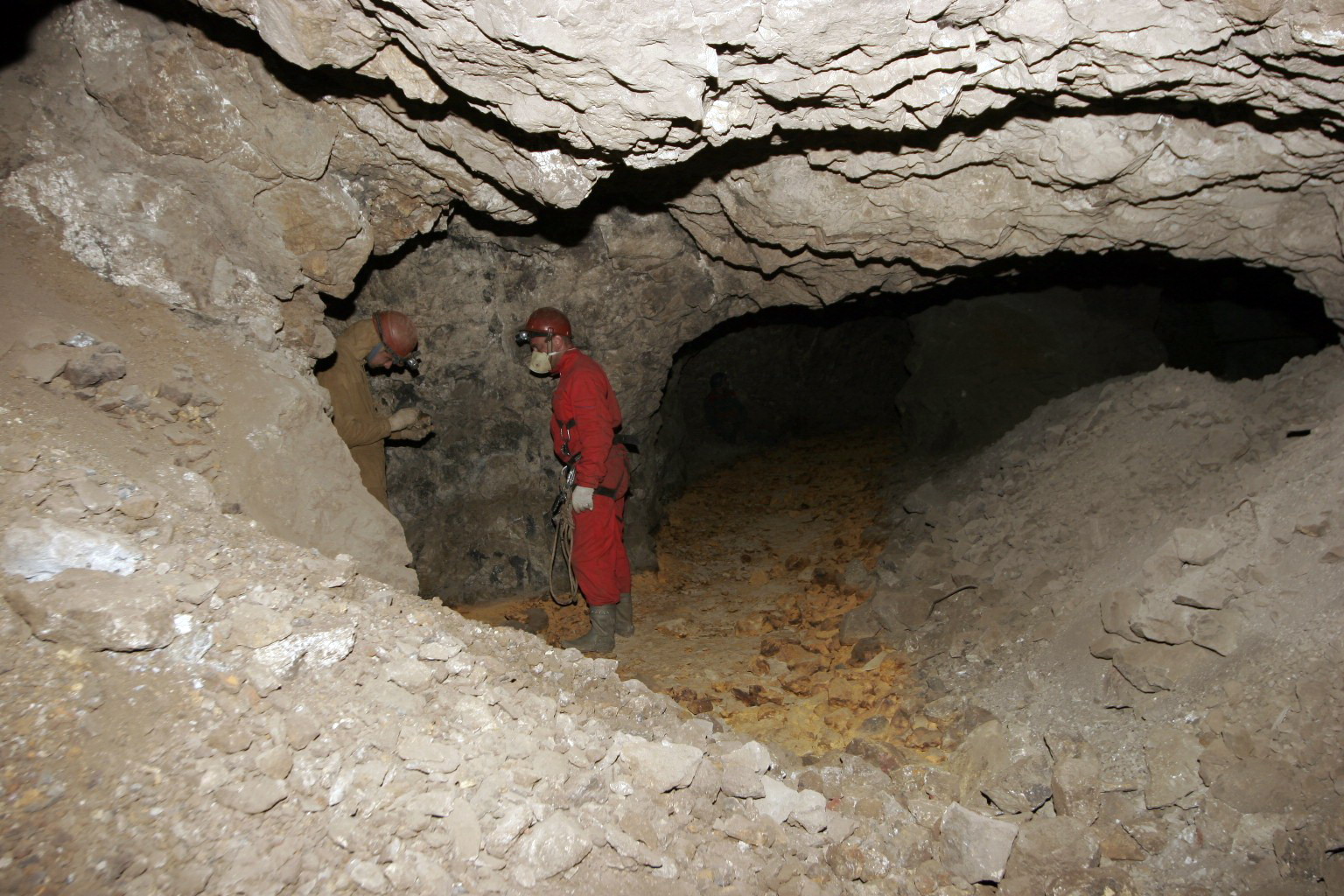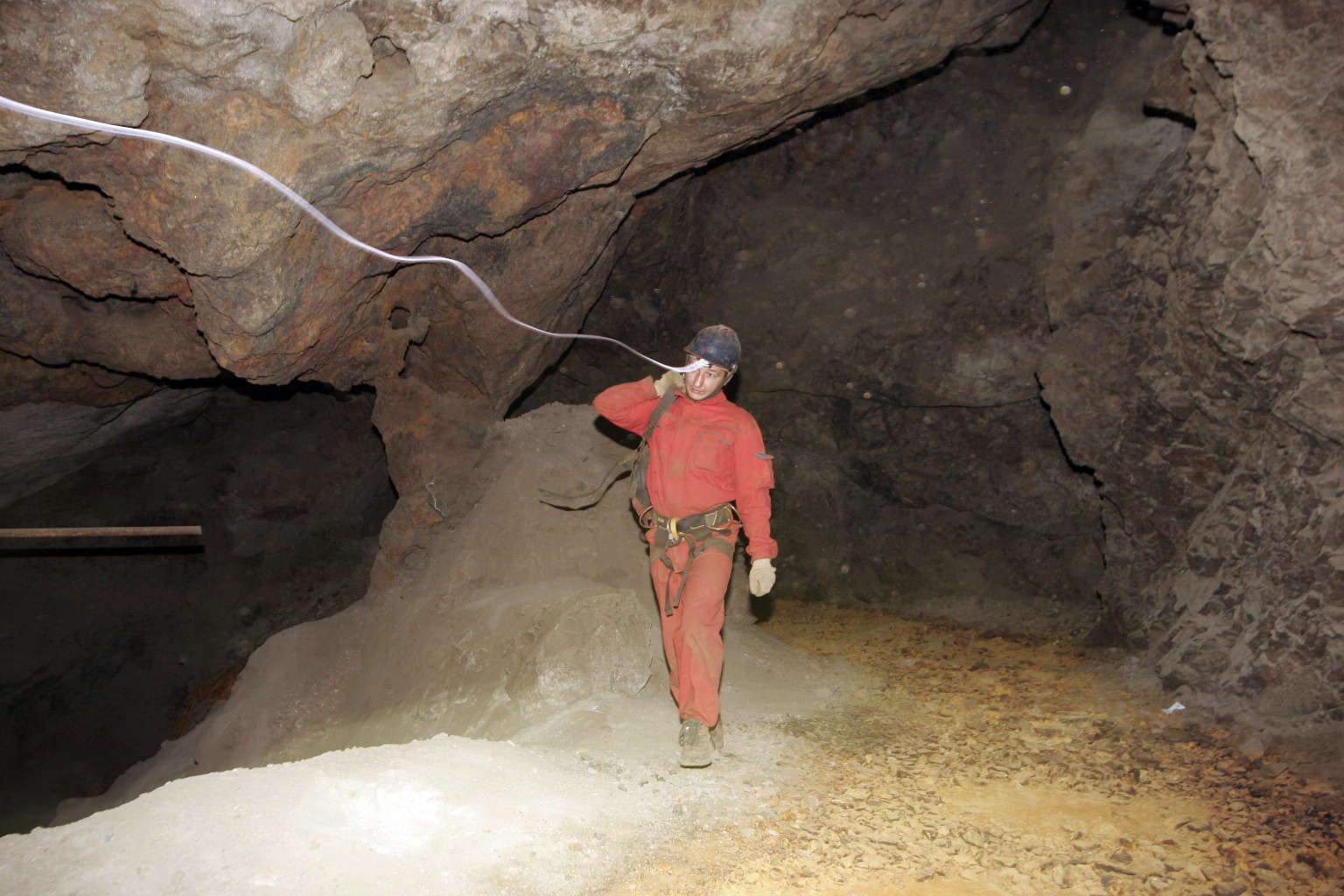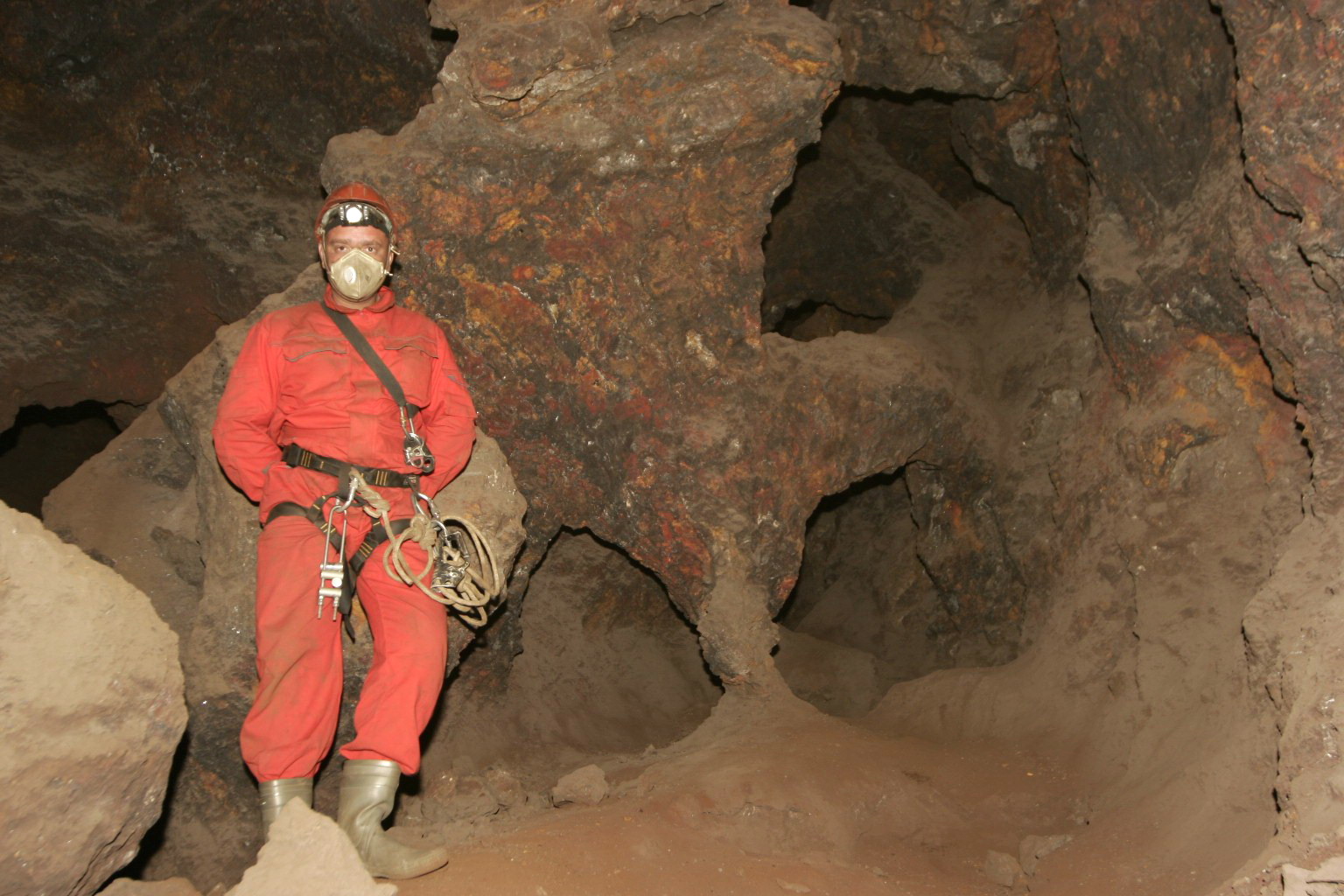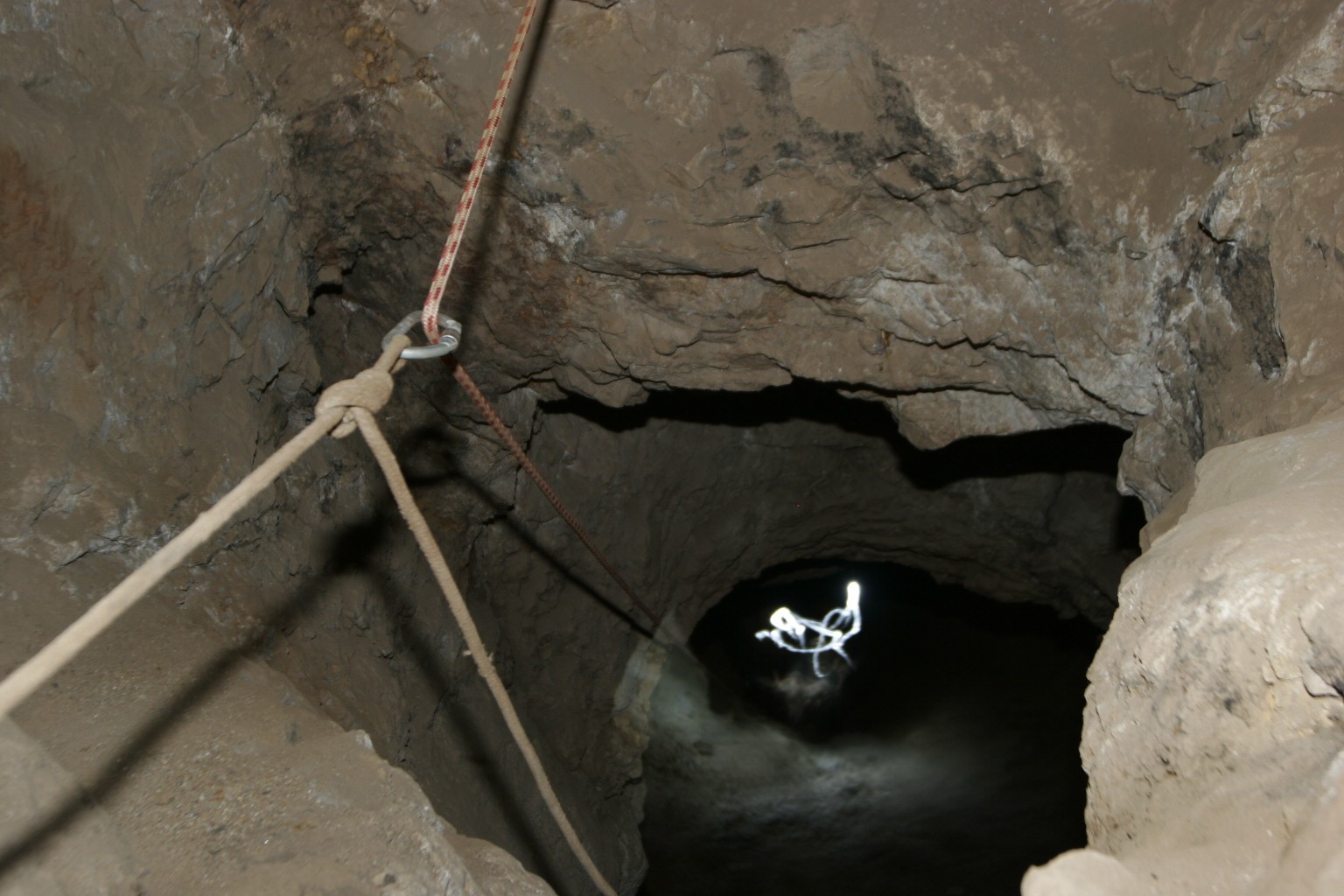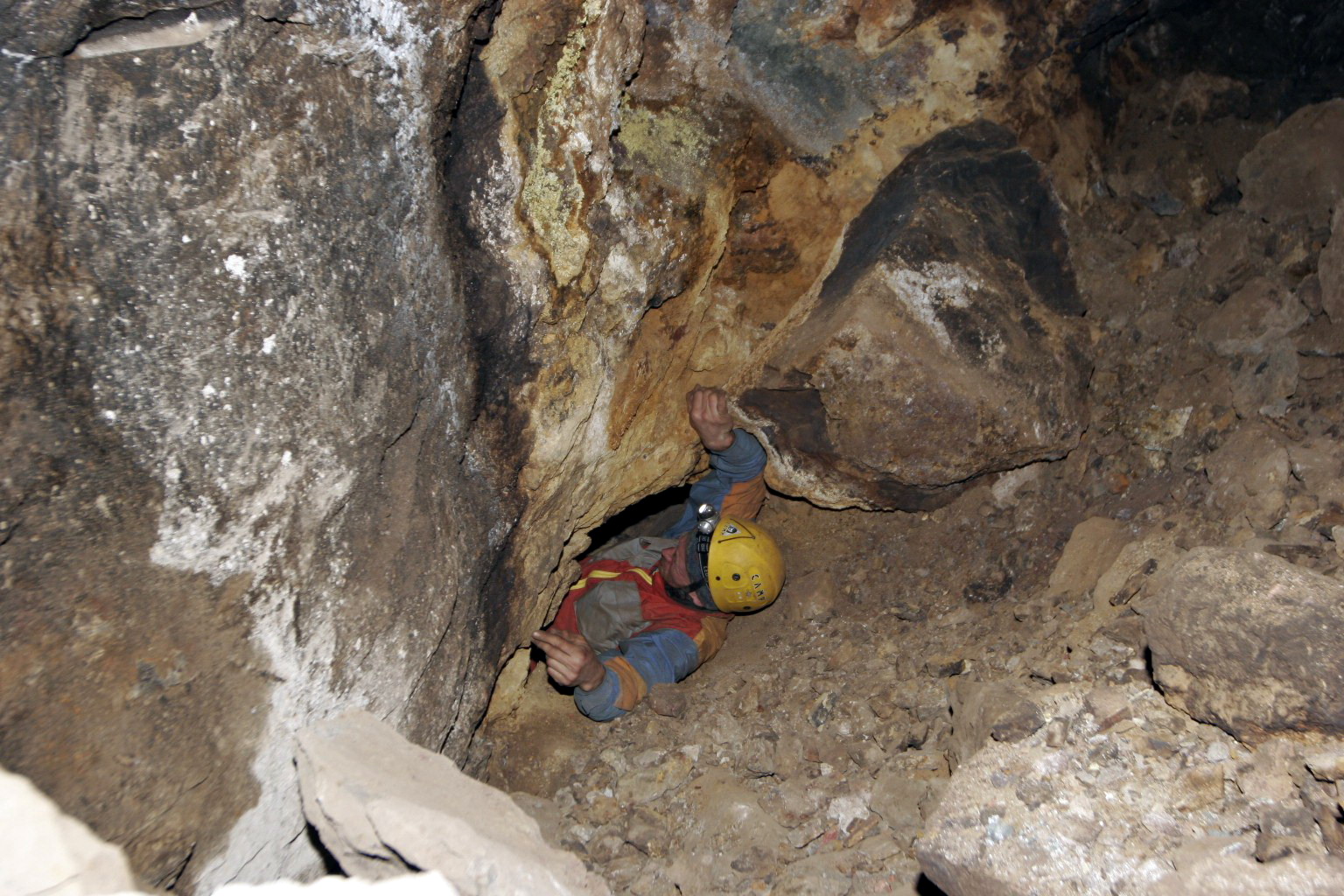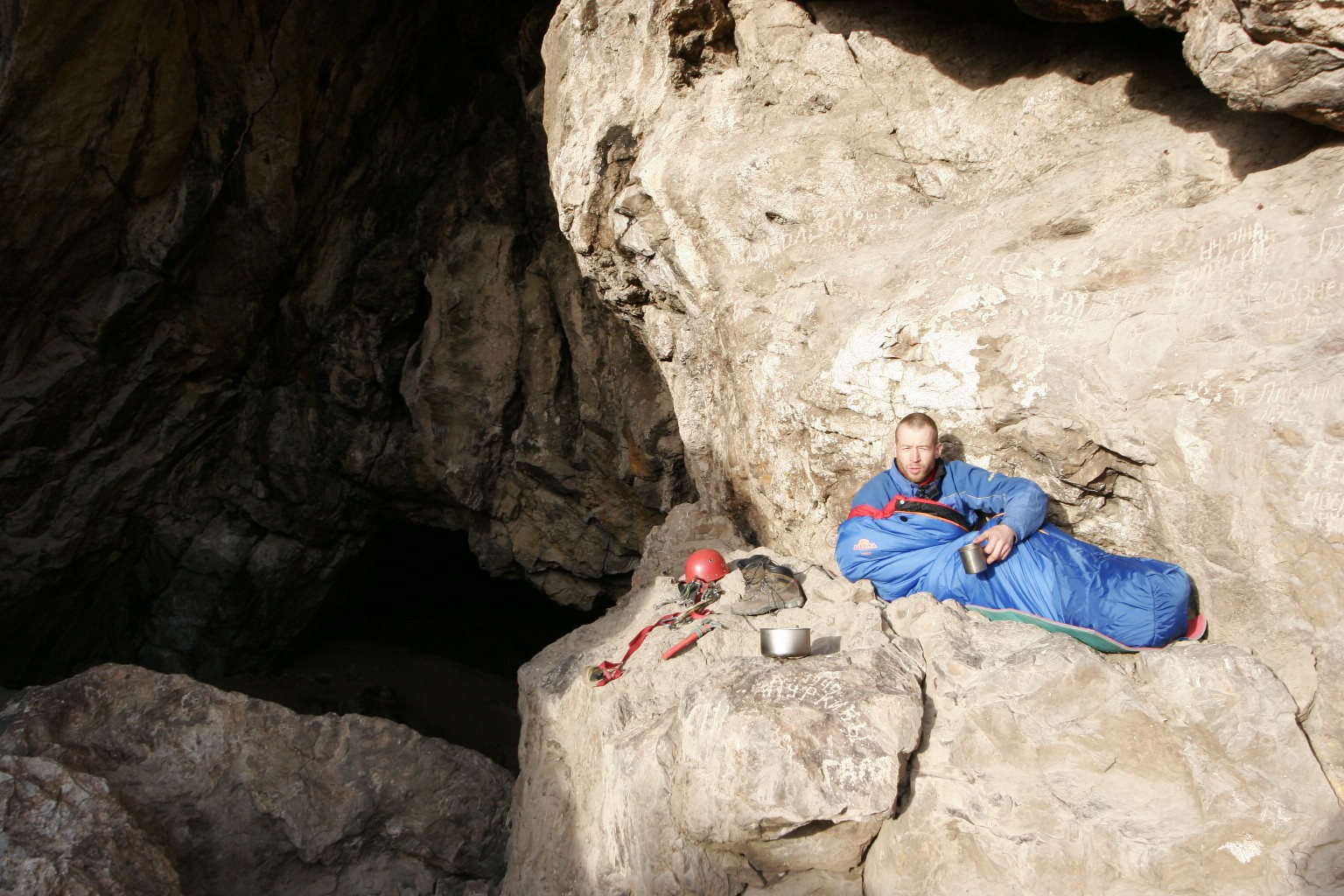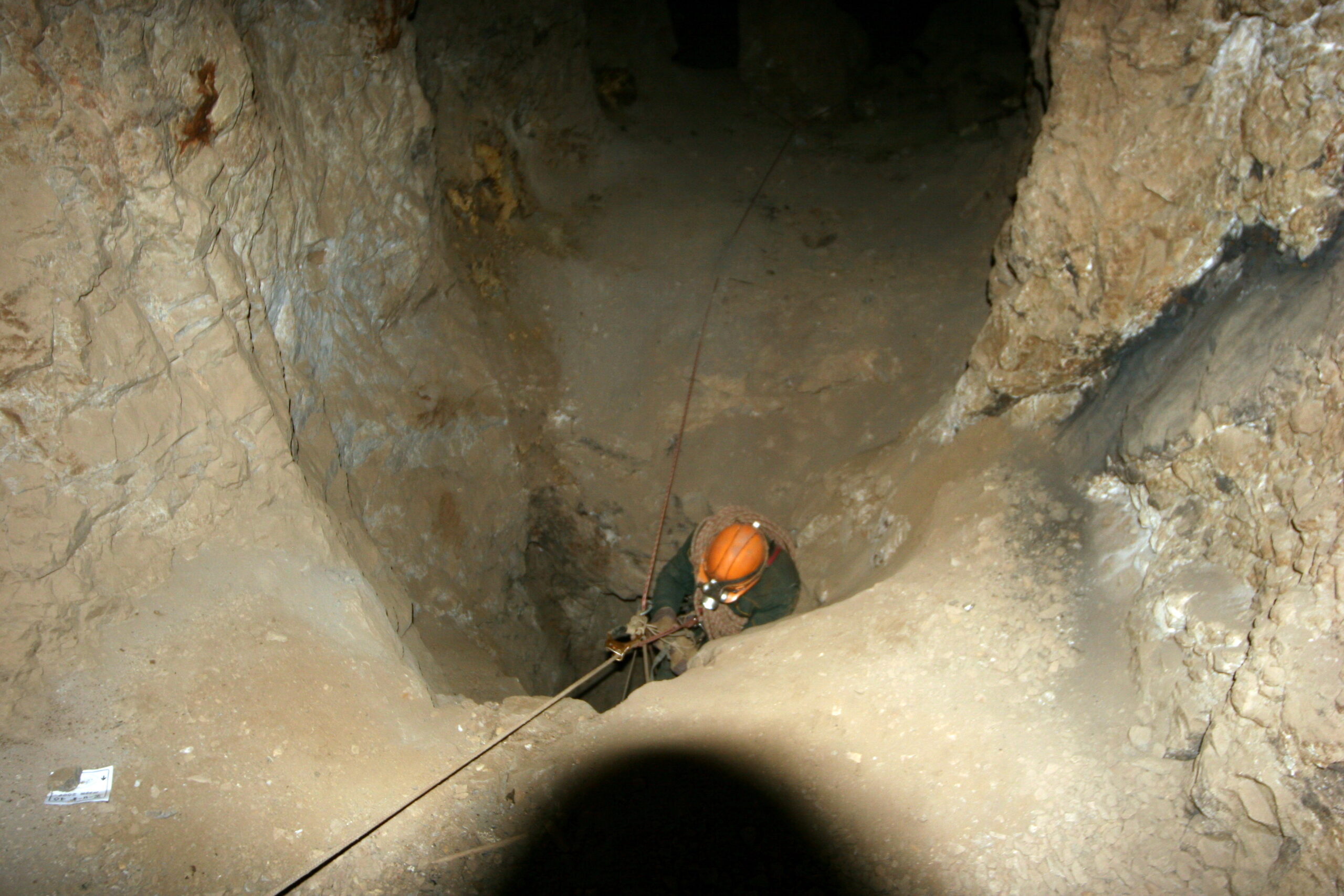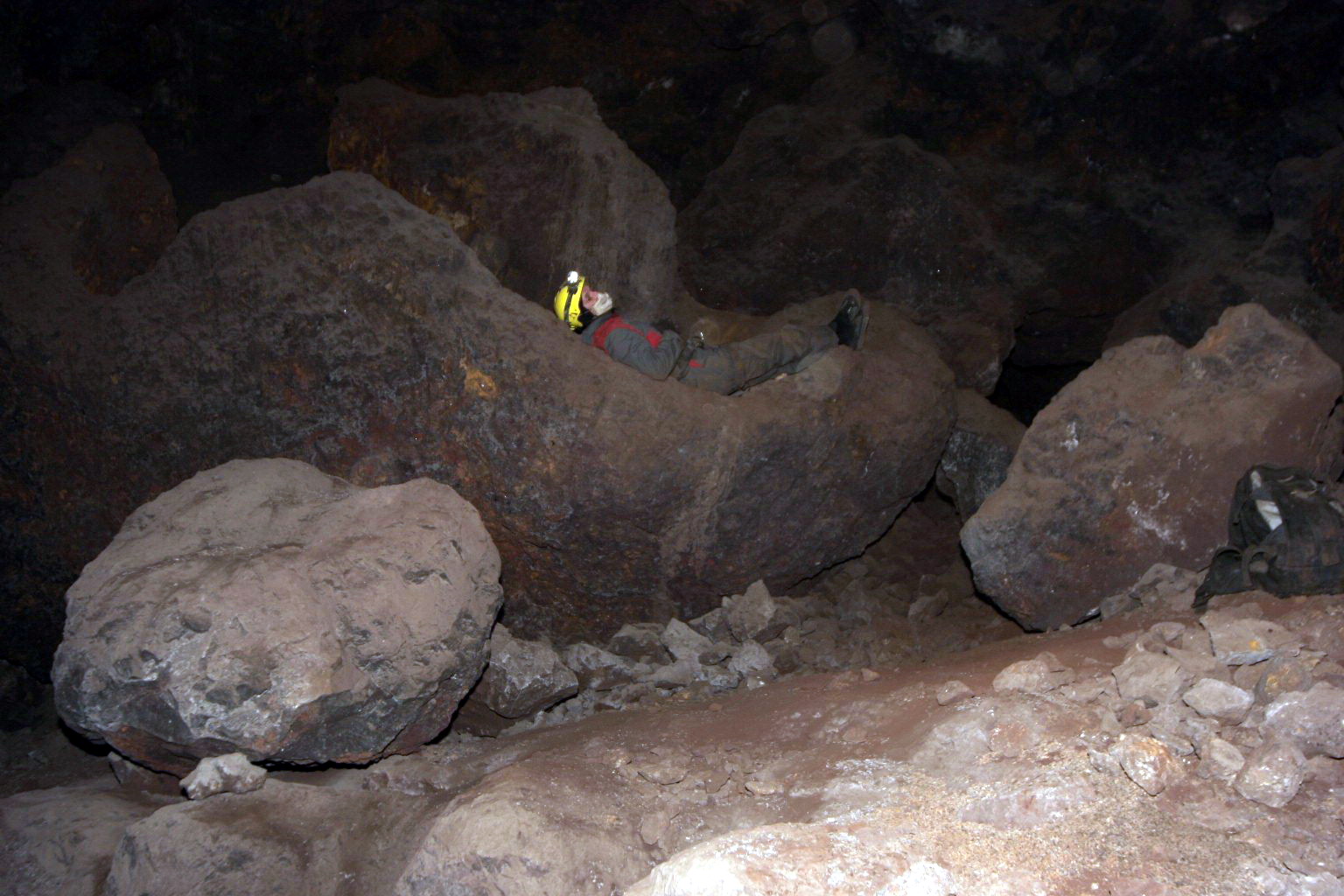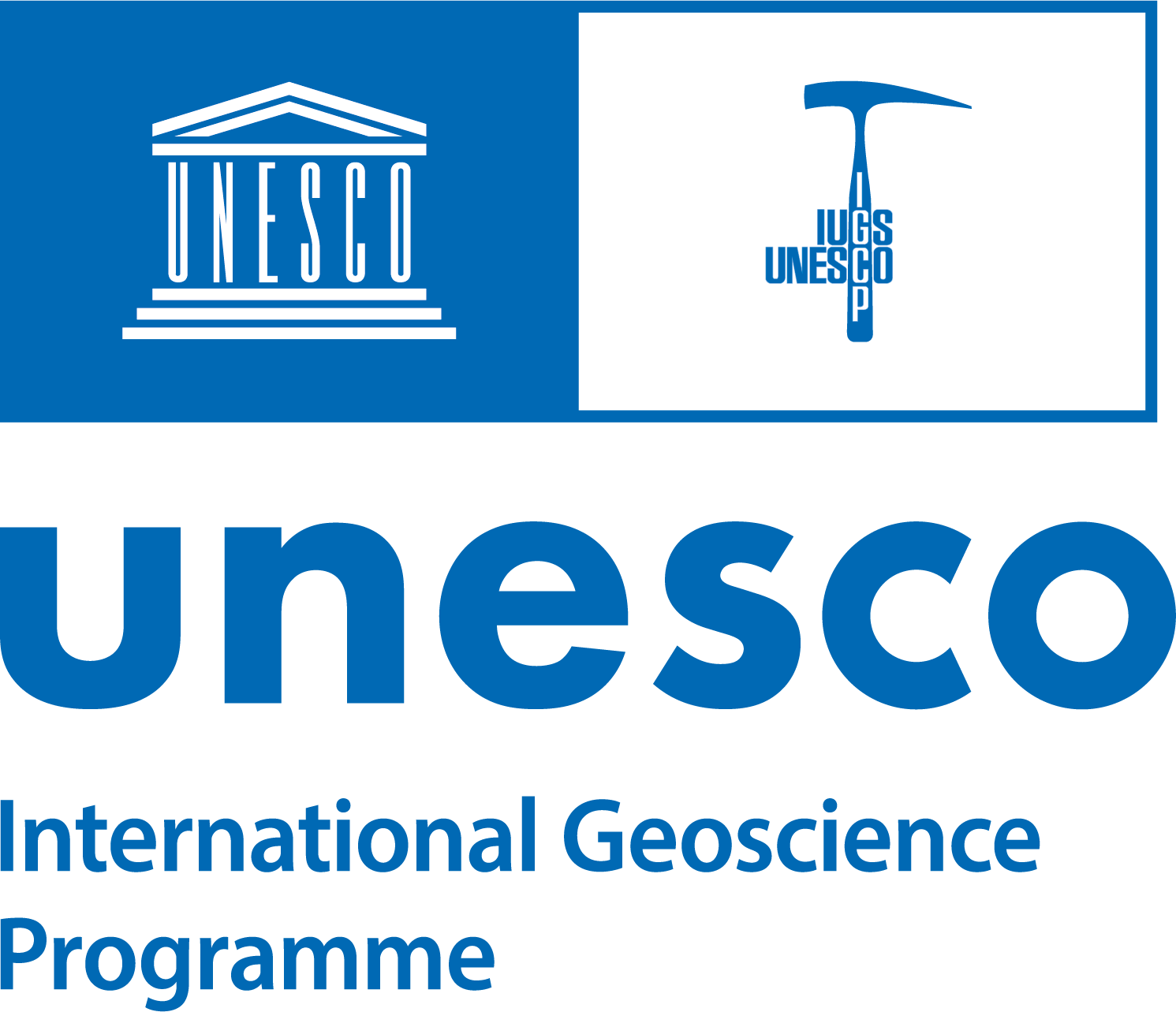 In 2021, the Madygen Geopark, a potential UNESCO Geopark, was created in the southwestern part of the Tian-Shan.
In 2021, the Madygen Geopark, a potential UNESCO Geopark, was created in the southwestern part of the Tian-Shan.
The ancient cave mine Kani-Gut is a grandiose historical monument in Central Asia, which can become a unique speleo-tourist object of the history of the development of metallurgy and mining in the territory of the geopark.
Preliminary expedition dates: August 09 – August 20, 2024
In addition to the unique objects of geological heritage in the geopark, there are unexplored caves. Some caves have been explored in different years, other caves have remained unexplored. The last speleological expeditions in the area were in 1976 and 2008.
Several caves are known within the geopark. Entrances to potential caves are located in hard-to-reach places on high vertical walls that only speleologists can explore. But some caves are open to tourists. However, these caves are not equipped with tourist infrastructure. Some caves are habitats for rare bats listed in the Red Book and the International Red List. In the Sokh canyon there are caves where scientists have discovered sites of Paleolithic man.
But in this expedition we are interested in another cave, the legendary ancient cave mine Kani-Gut. The Kani-Gut cave was described in the treatises of the medieval Persian scholar, philosopher Avicena. The Kani-Gut cave is also mentioned in ancient Chinese and Arabic sources. The history of the cave is closely connected with the development of the Great Silk Road. In the Middle Ages, silver ore was mined in an ancient cave mine. In the vicinity of the cave, ancient metallurgical structures in the form of smelting furnaces have been preserved. It is obvious that these furnaces were used to produce metal.
What technologies were used in the Middle Ages to obtain metal from cave ore? The answer to this question can be obtained from the results of the expedition.
Currently, Kani-Gut is a state historical reserve of Kyrgyzstan.
According to historians, the Kani-Gut cave is a unique cultural and historical monument that has been actively used as a mine for 1500 years, i.e. 15 centuries. It is possible that the ancient cave mine Kani-Gut was used during the reign of Ulugbek, the ruler of the Turkic state of the Timurids, the grandson of Tamerlane. Ulugbek was the ruler of Maveranahr, on whose territory other ancient mines were located, in which silver was mined. Until now, it is not known how this ancient mine functioned for a long time. What technologies were used to extract ore in the cave.
At present, the length of the cave is about 6 km of the Kani-Gut cave. Its depth reaches about 100 m. But speleologists say that the cave should be longer. This statement is based on the fact that the mine has been developed for 15 centuries and its length and volumes must be much larger.
In order to create a natural-historical object in the cave for safe tourism and education, we must explore these opportunities, explore different places in the cave, inventory unique places and objects that can be used for the development of tourism infrastructure. The cave has very narrow galleries, which are the result of ore mining. The diameter of these galleries is only 30 cm, and some of them are about 50-80 m long. Scientists do not know how ore could be mined in such narrow galleries. Perhaps child labor was used?
We intend to turn the cave into a tourist attraction and create safe tourist routes. This is the best way to save the cave. In the cave and its surroundings, we want to create reconstructions of ore mining and metal production in the Middle Ages. To do this, it is necessary to investigate the history of the development of an ancient cave mine. It is necessary to understand what technologies were used to extract the ore. As a result, we want to make historical reconstructions and installations inside and around the cave. For example, it is interesting to create a reconstruction of how ancient slaves mined ore in a cave and lifted it up. To this end, we must make a topographic survey to lay out safe tourist routes and systematize galleries at different levels of the cave, which have different ages.
Therefore, we hope for the support of experts in caving tourism and demonstration of caves for tourists. As a result of the research, we plan to create a project to organize a tourist facility in the Kani-Gut cave.
On history, archeology, numismatics. What can they tell about the Kani-Gut mine? by this link:
We invite speleologists, historians and archaeologists to take part in the international complex speleological, archaeological expedition “Kani-Gut-2024“. If you need a visa, we can arrange visa support for you. For legal research, we will obtain official permission from the relevant government agencies.
If you are interested in archaeological, speleological research in the geopark, please contact us: info@geotianshan.org
- Expedition goals:
– Research and inventory of ancient mine workings in the Kani-Gut cave,
– Speleo-biological research,
– Archaeological research in the cave,
– Archaeological research in the vicinity of the cave and on the territory of the geopark,
– Evaluation of the cave as an object for the development of tourism,
– Evaluation of the cave as an object of geological and cultural heritage
- Expedition partners:
– Foundation for the Preservation and Exploration of Caves,
– Central Asian Speleological Union,
– UNESCO International Geosciences and Geoparks Program
– Batken State University
- Service
– Meeting at the airport,
– We rent vehicles for the entire period of the expedition,
– Equipment for the field base camp
